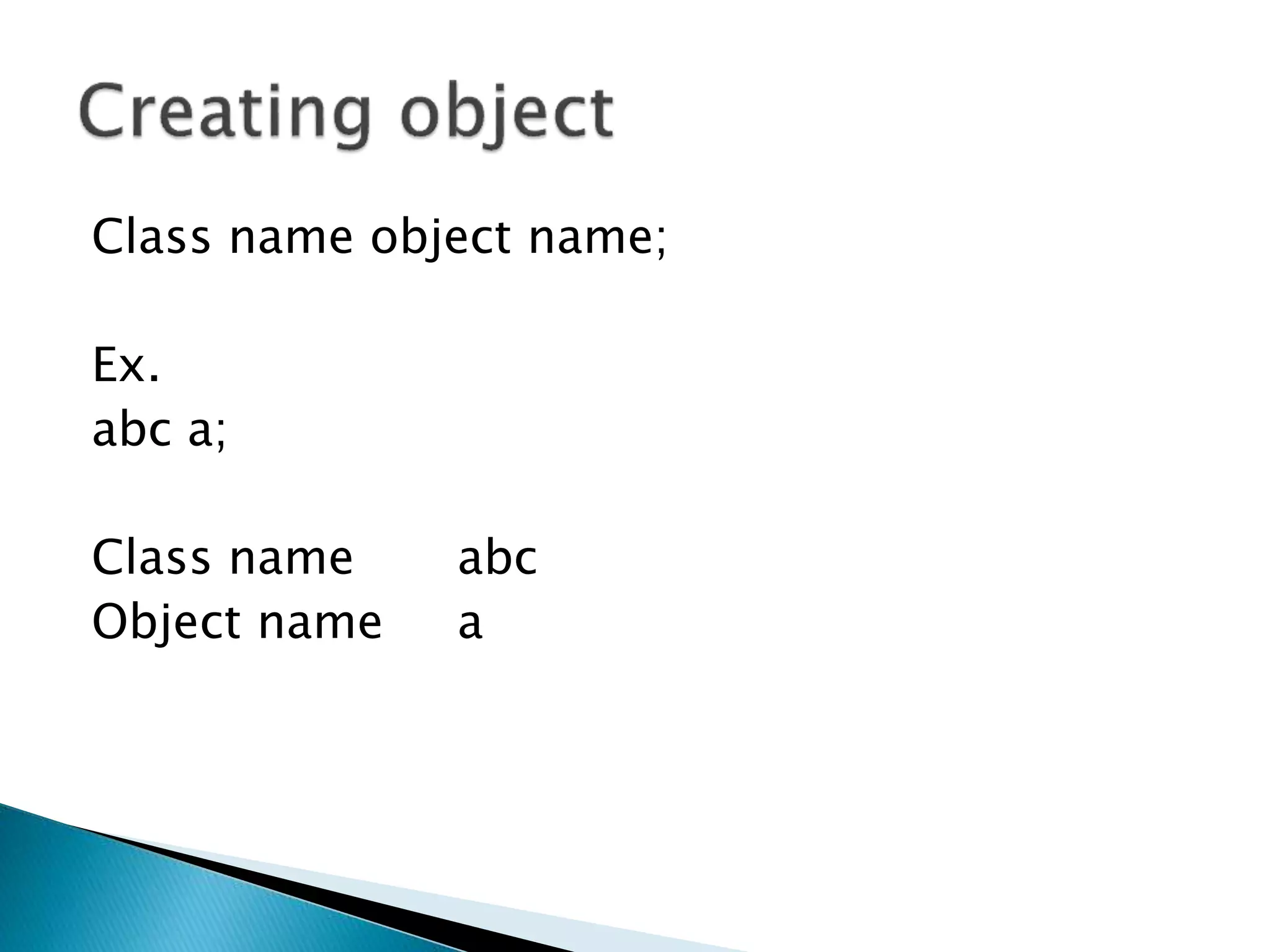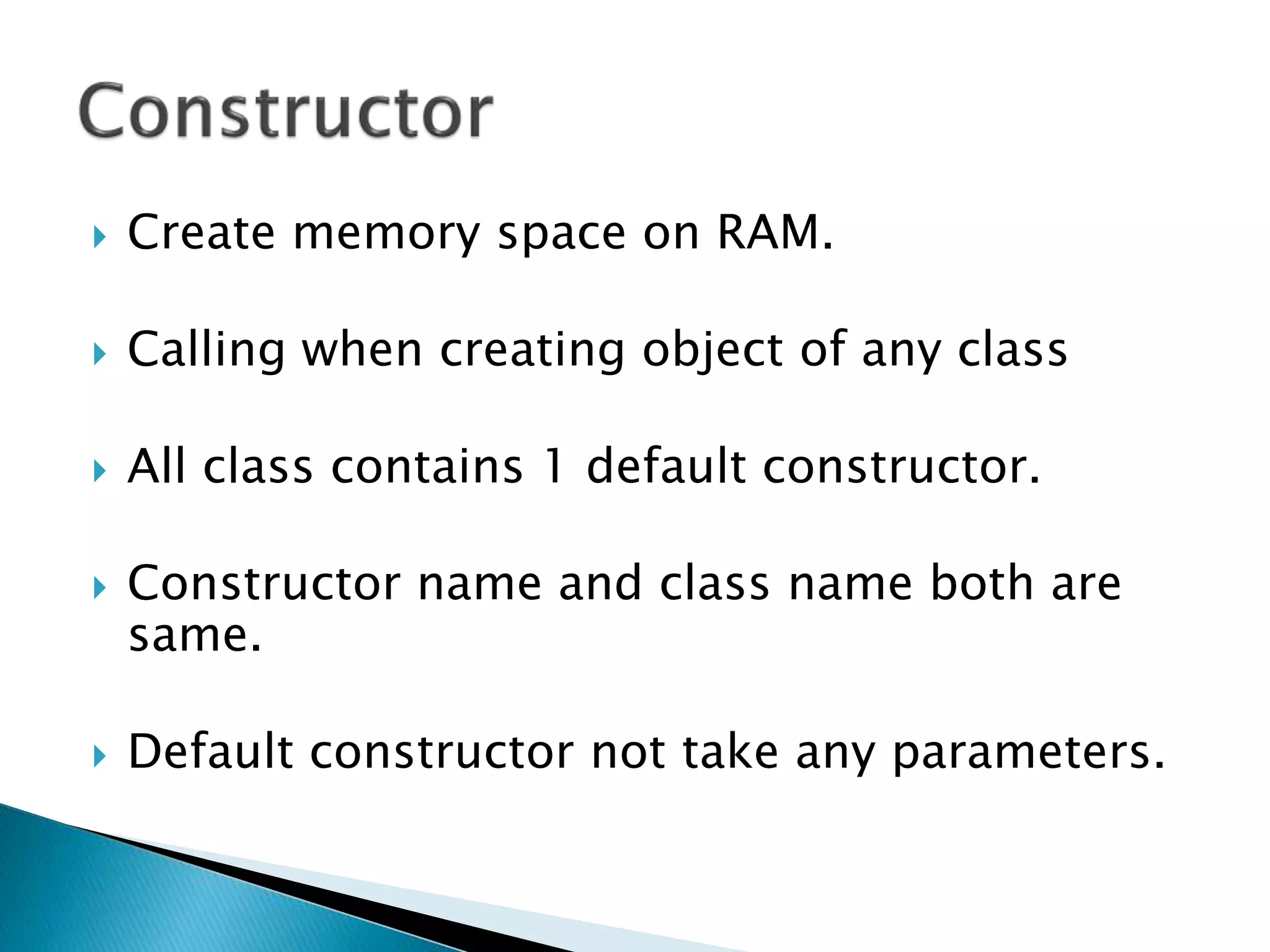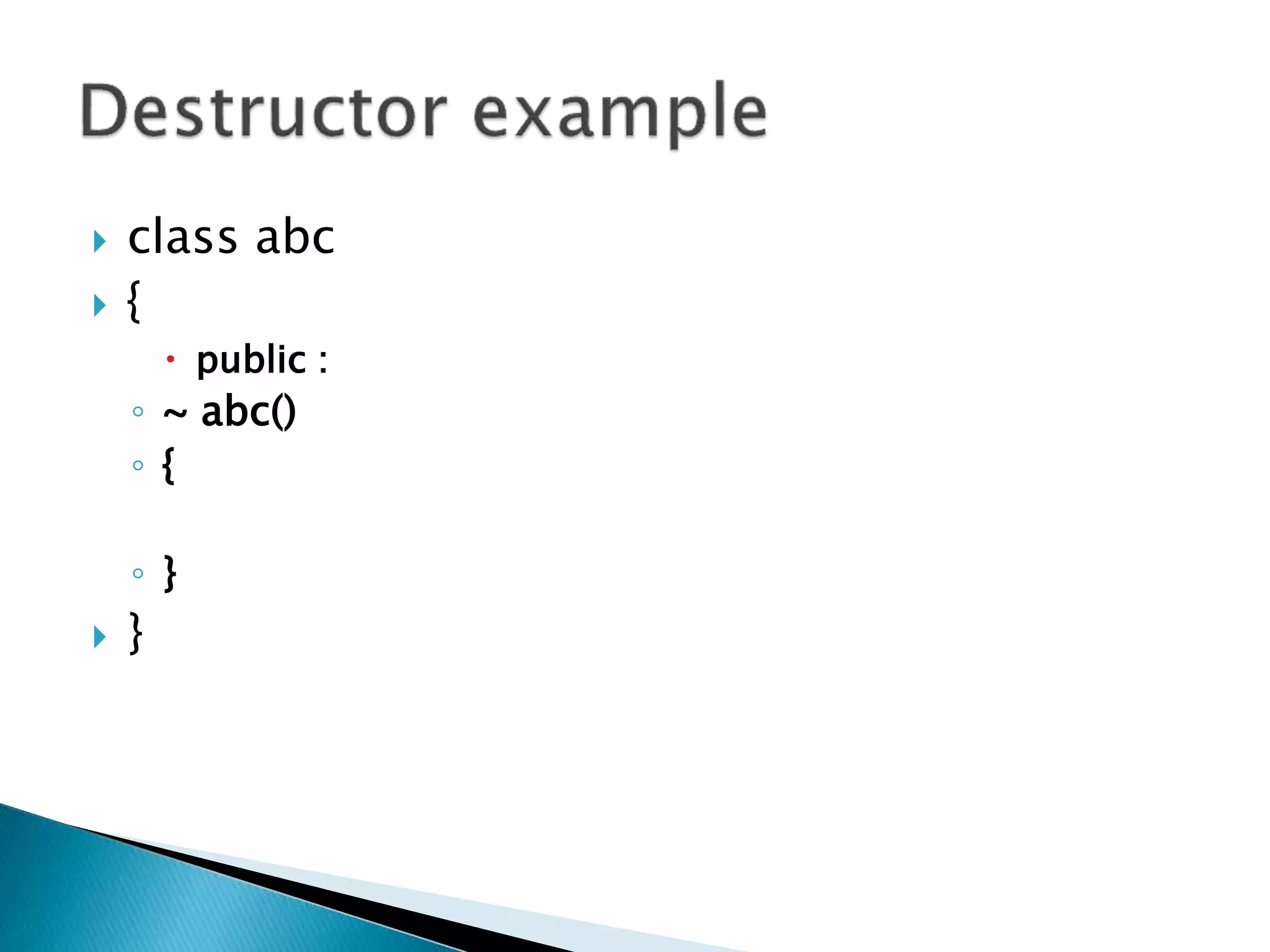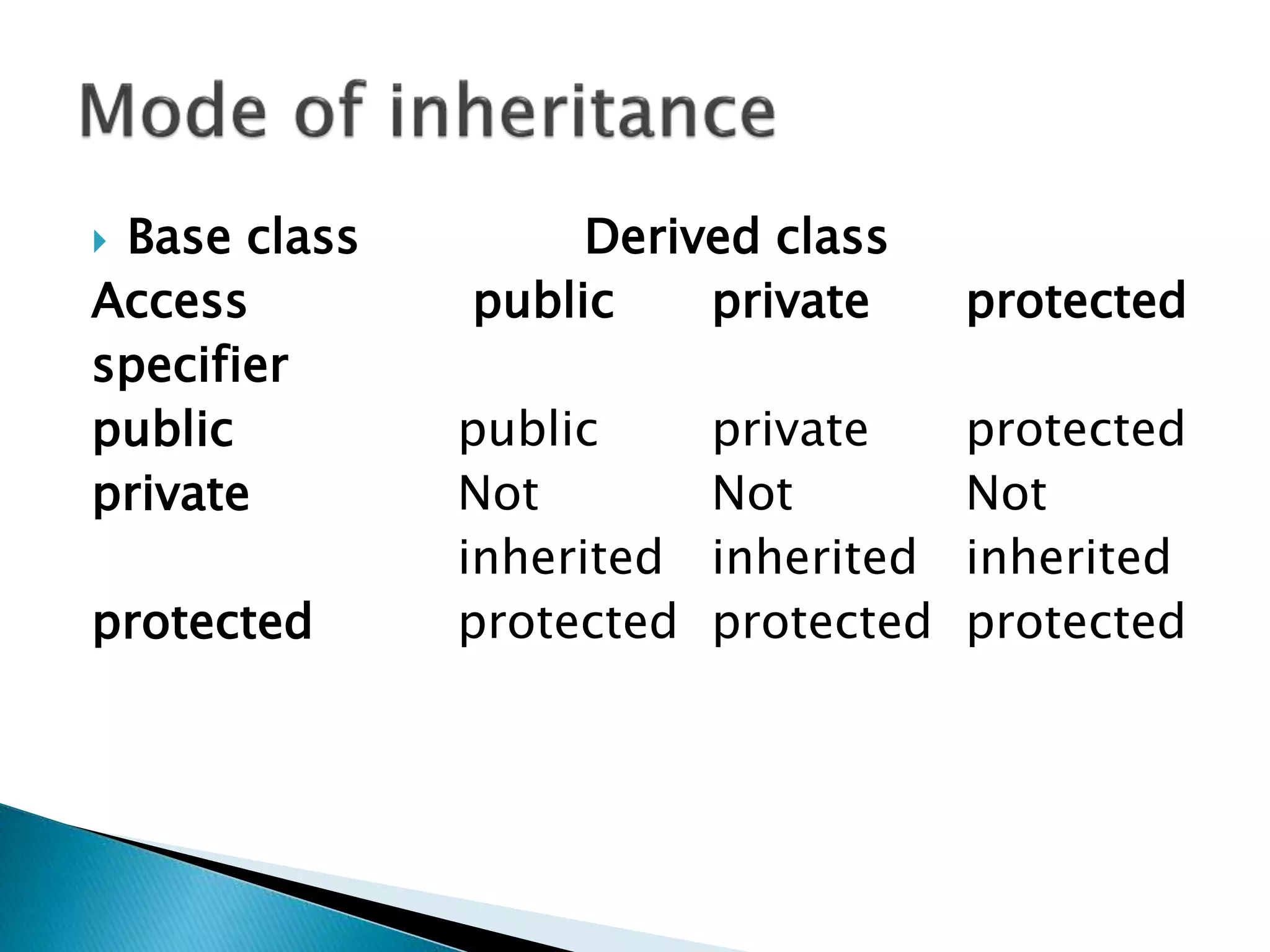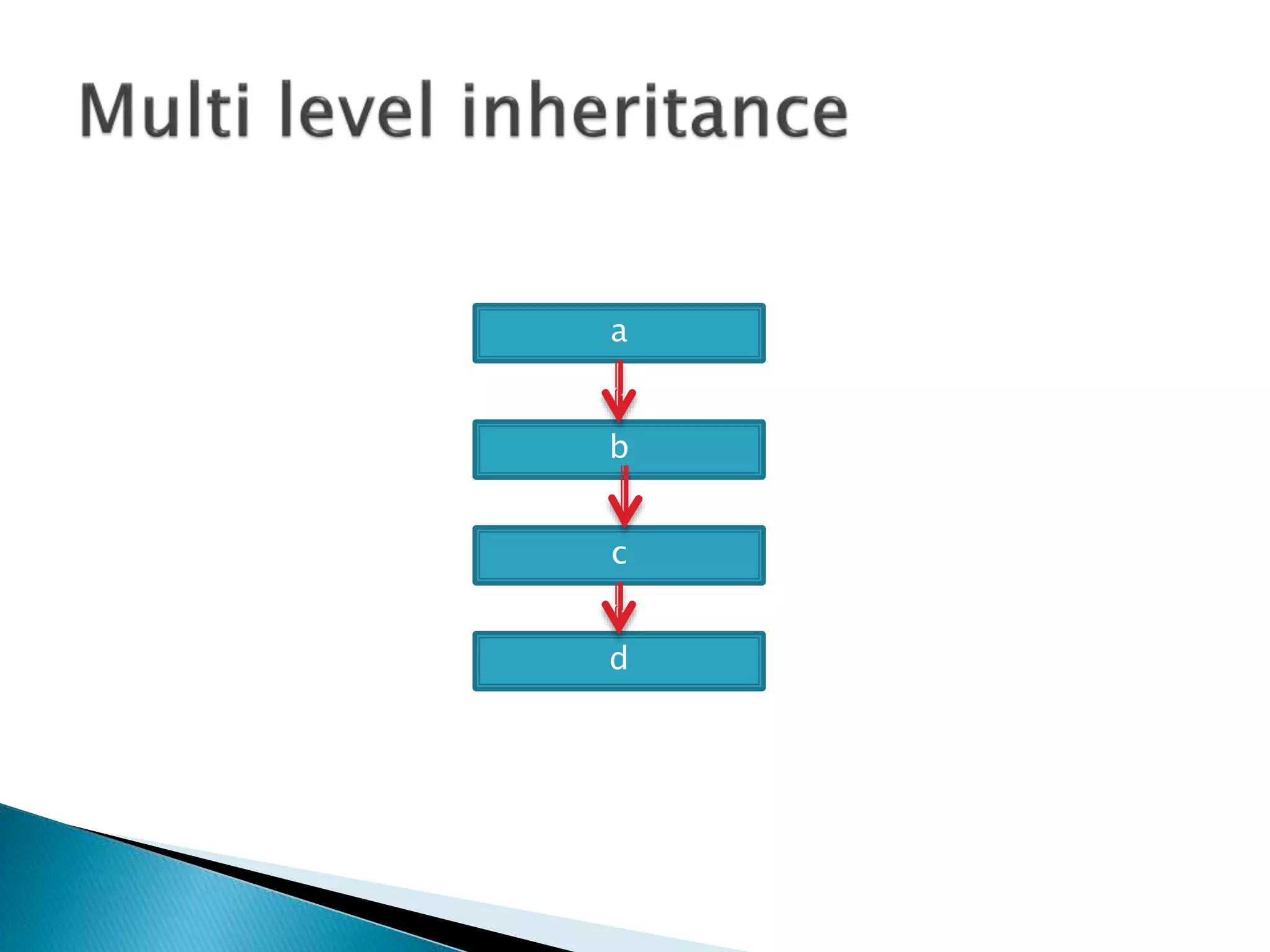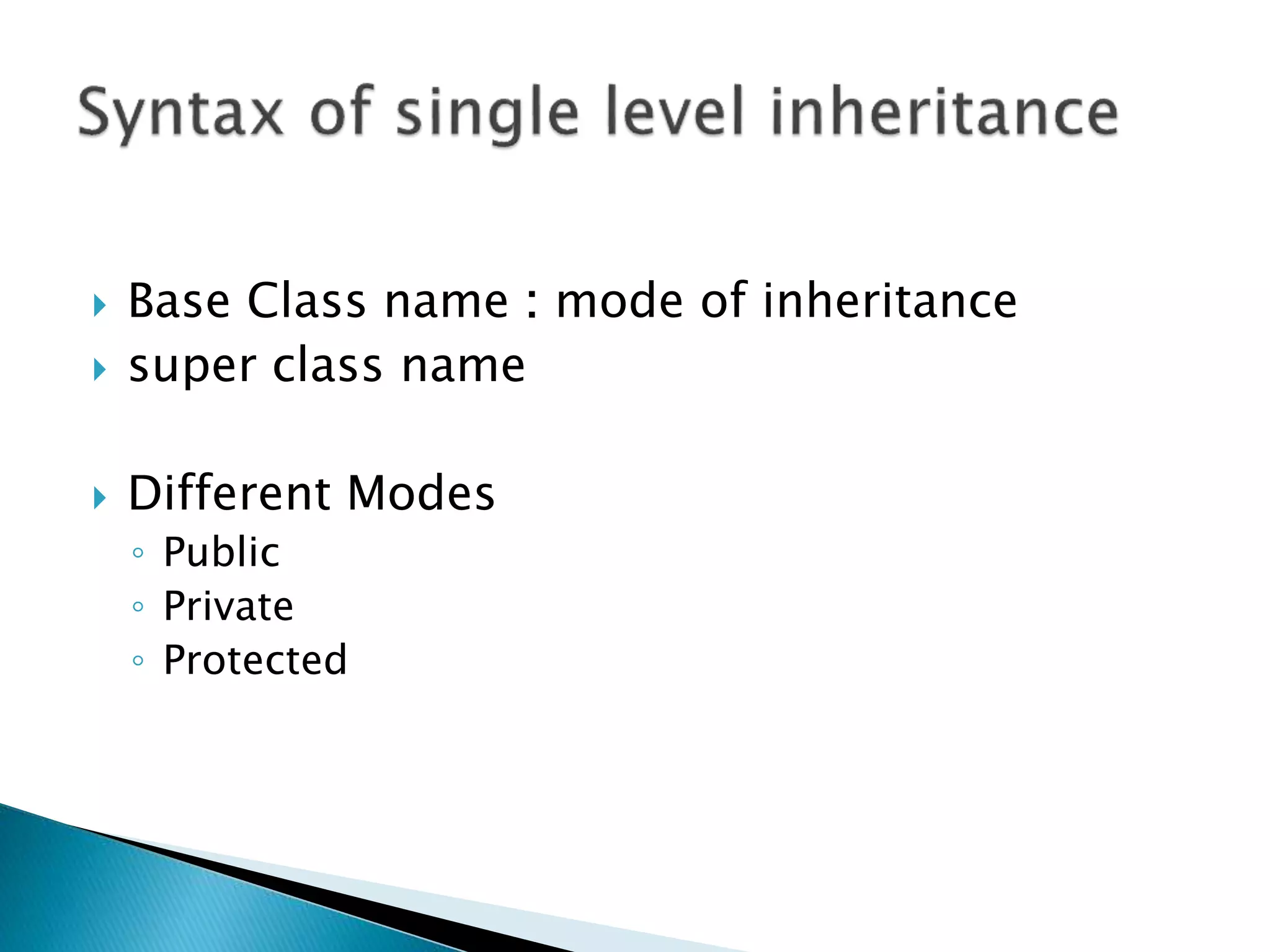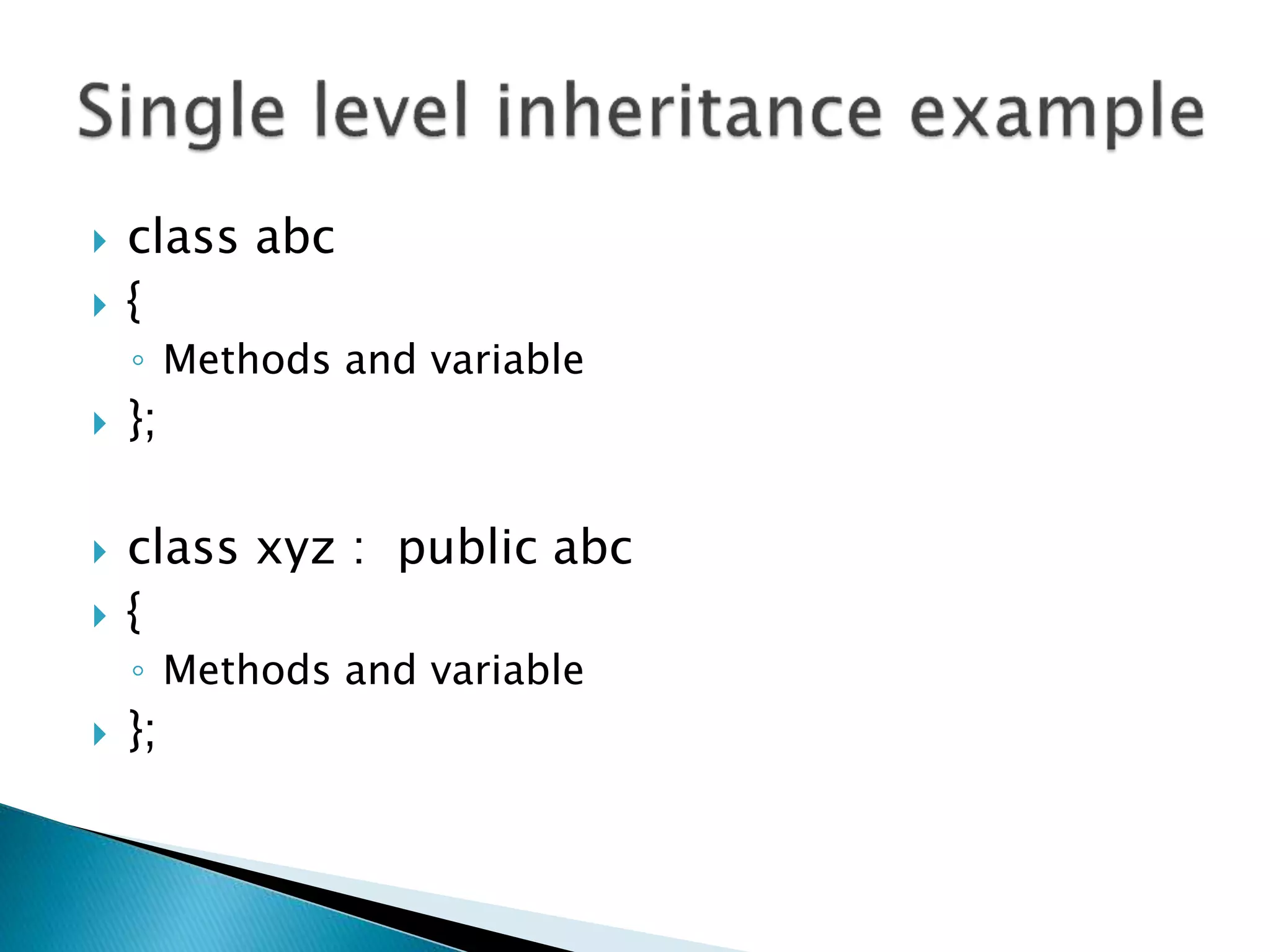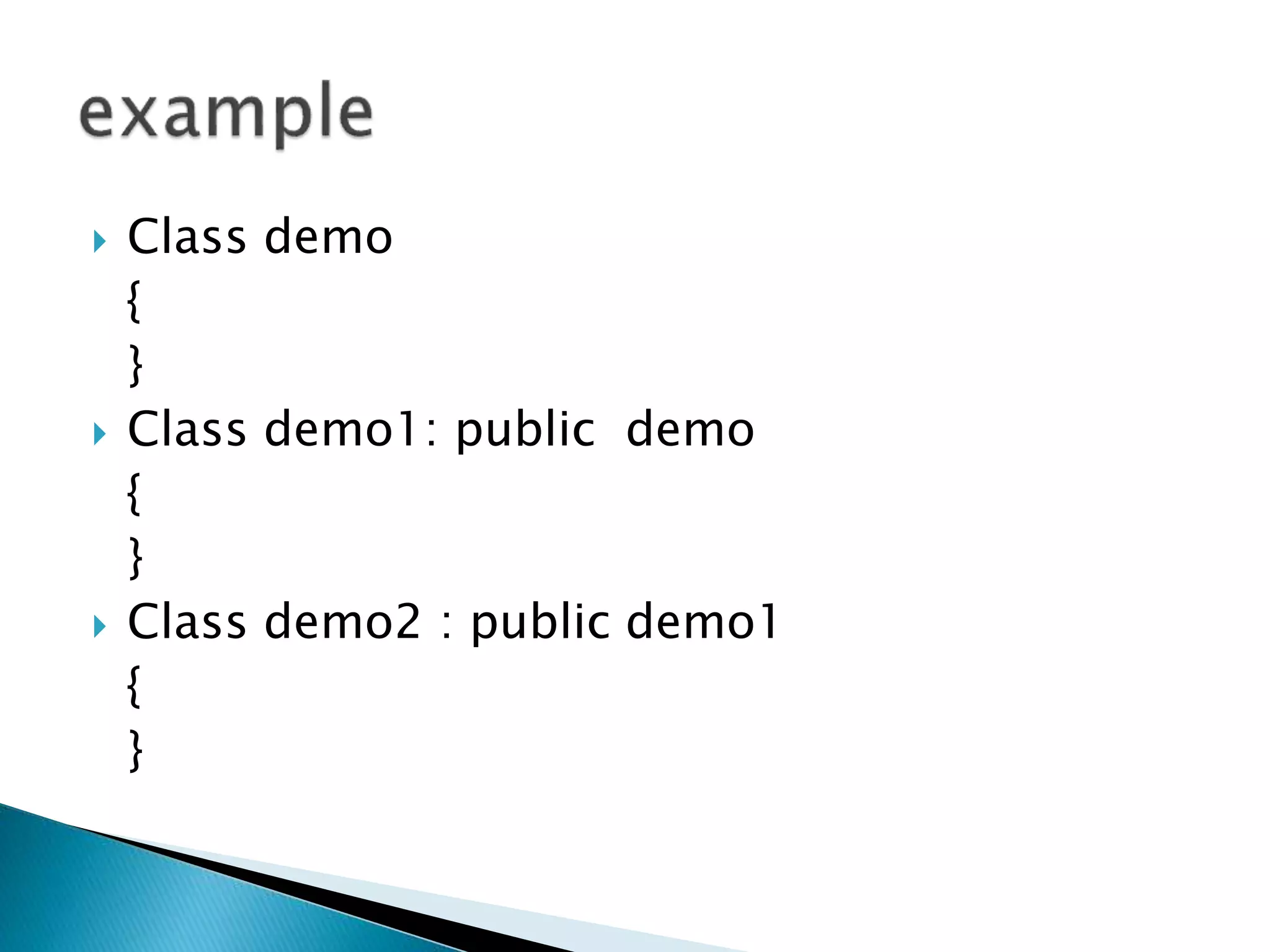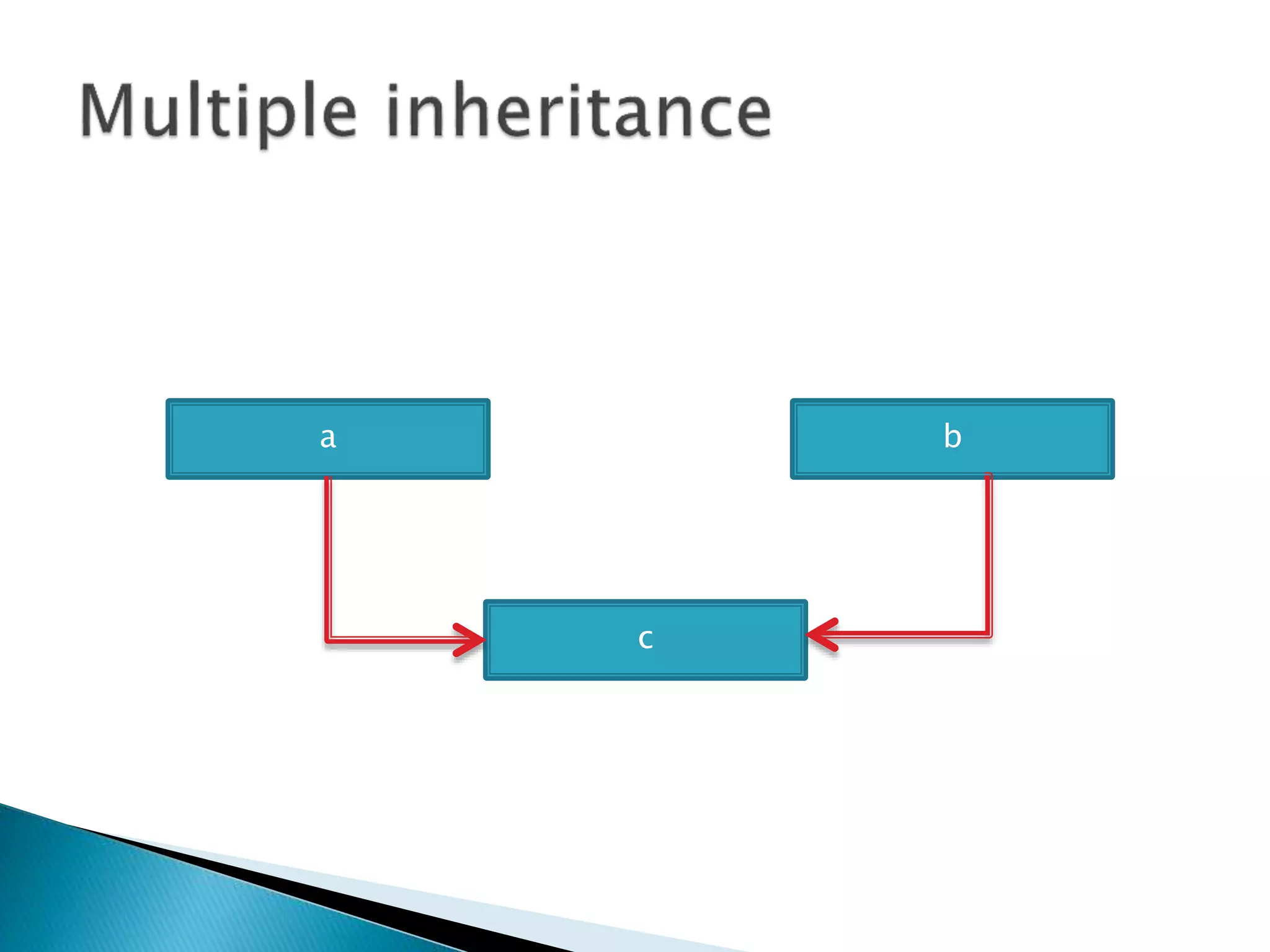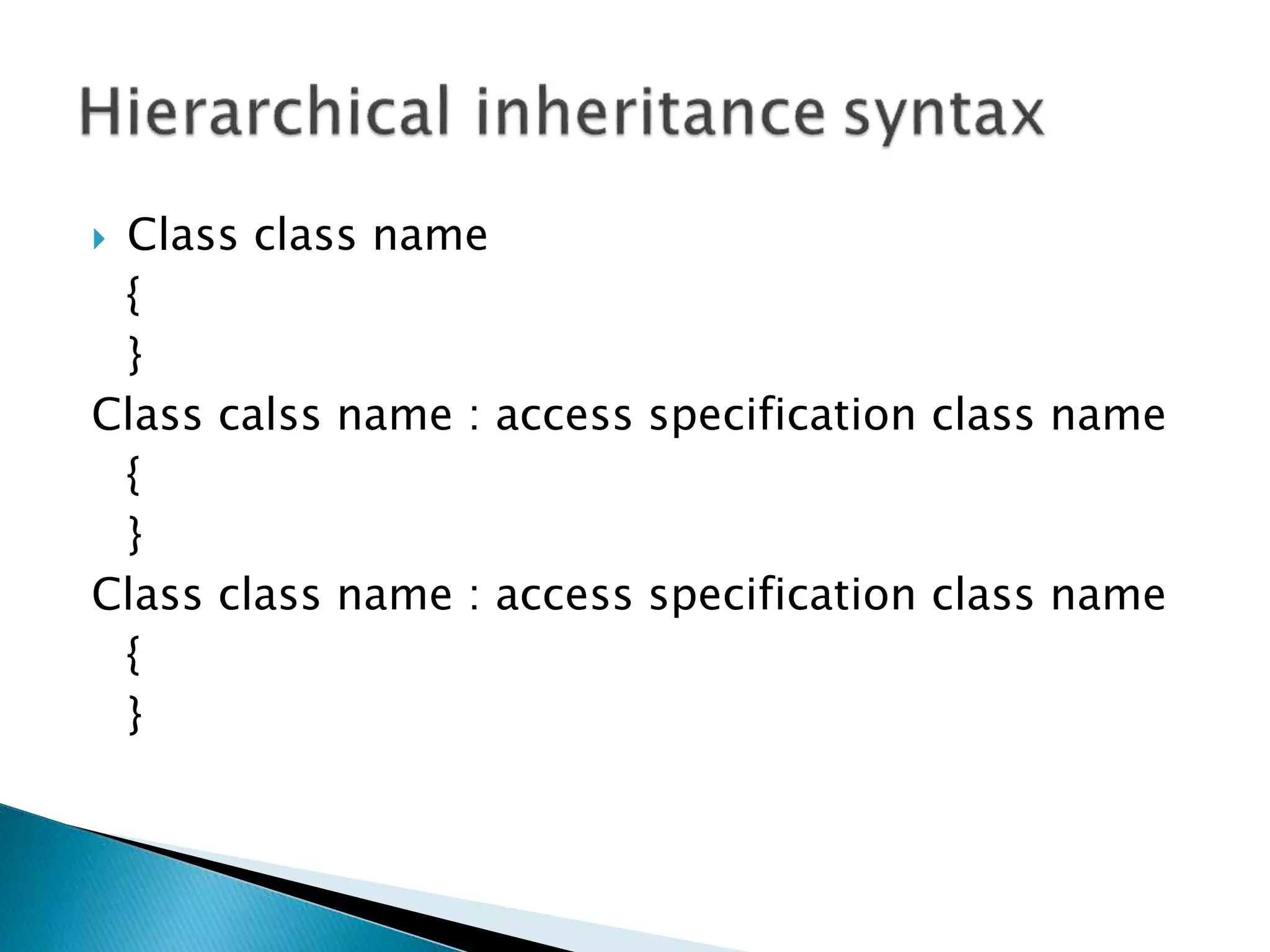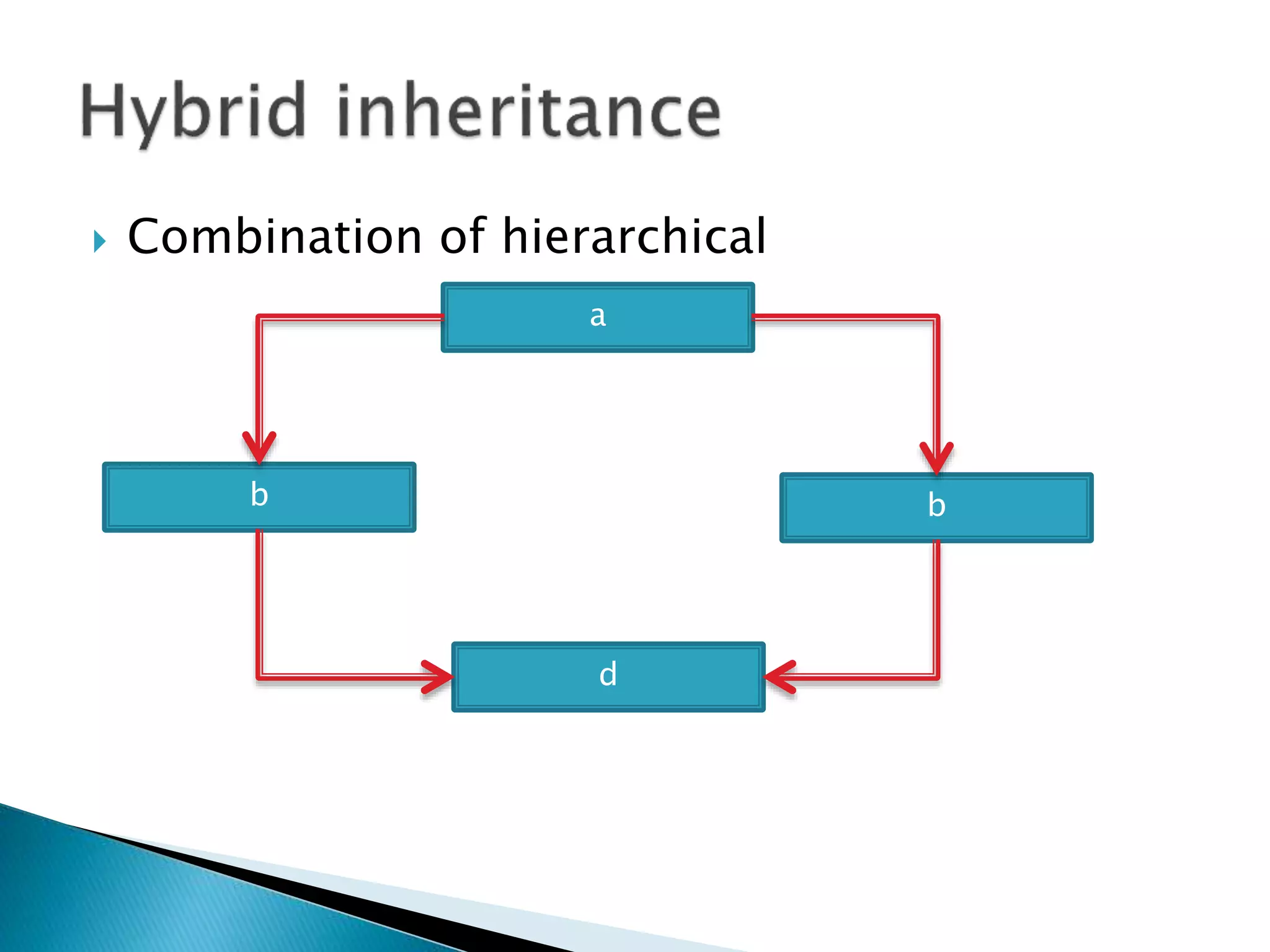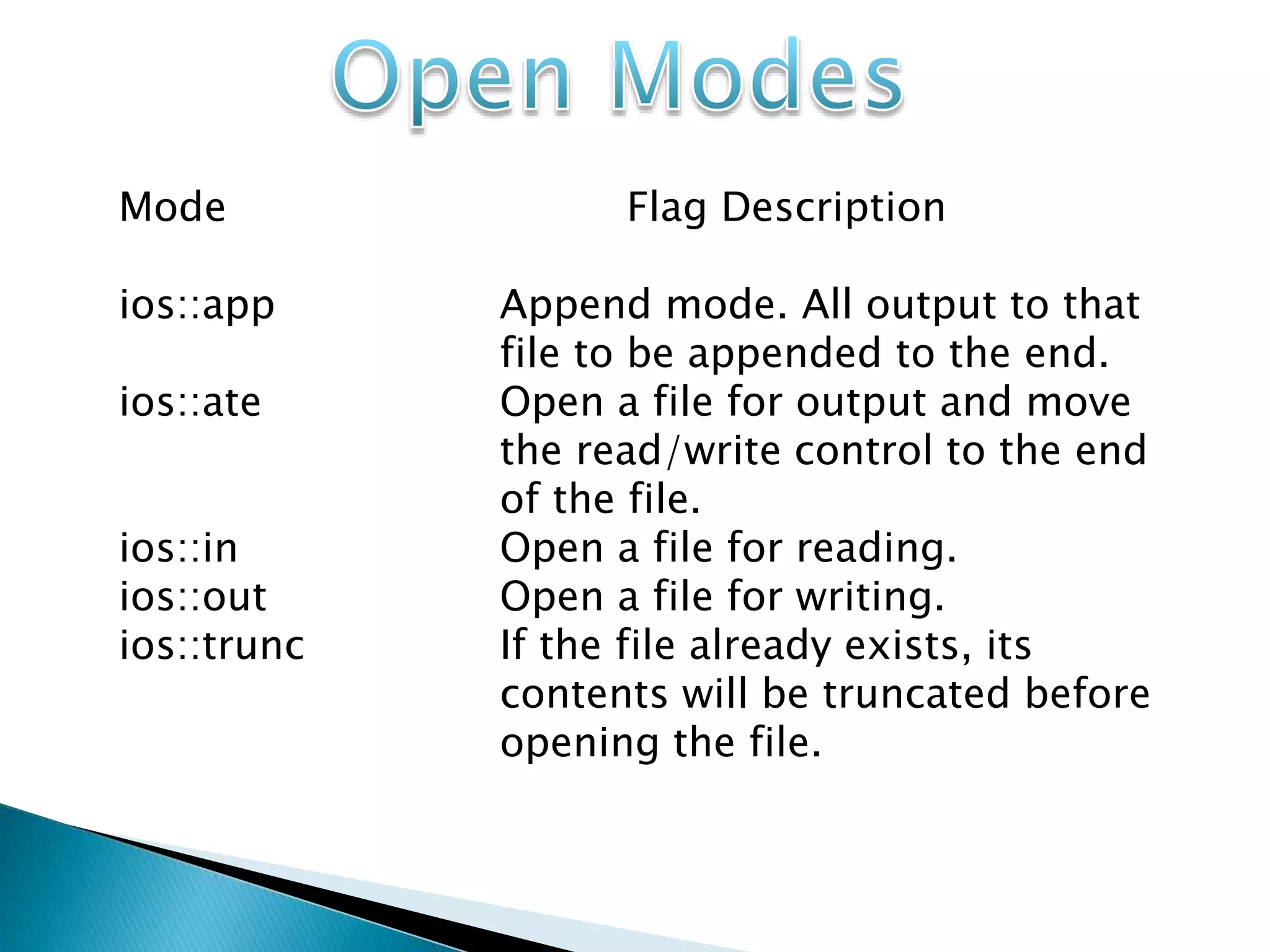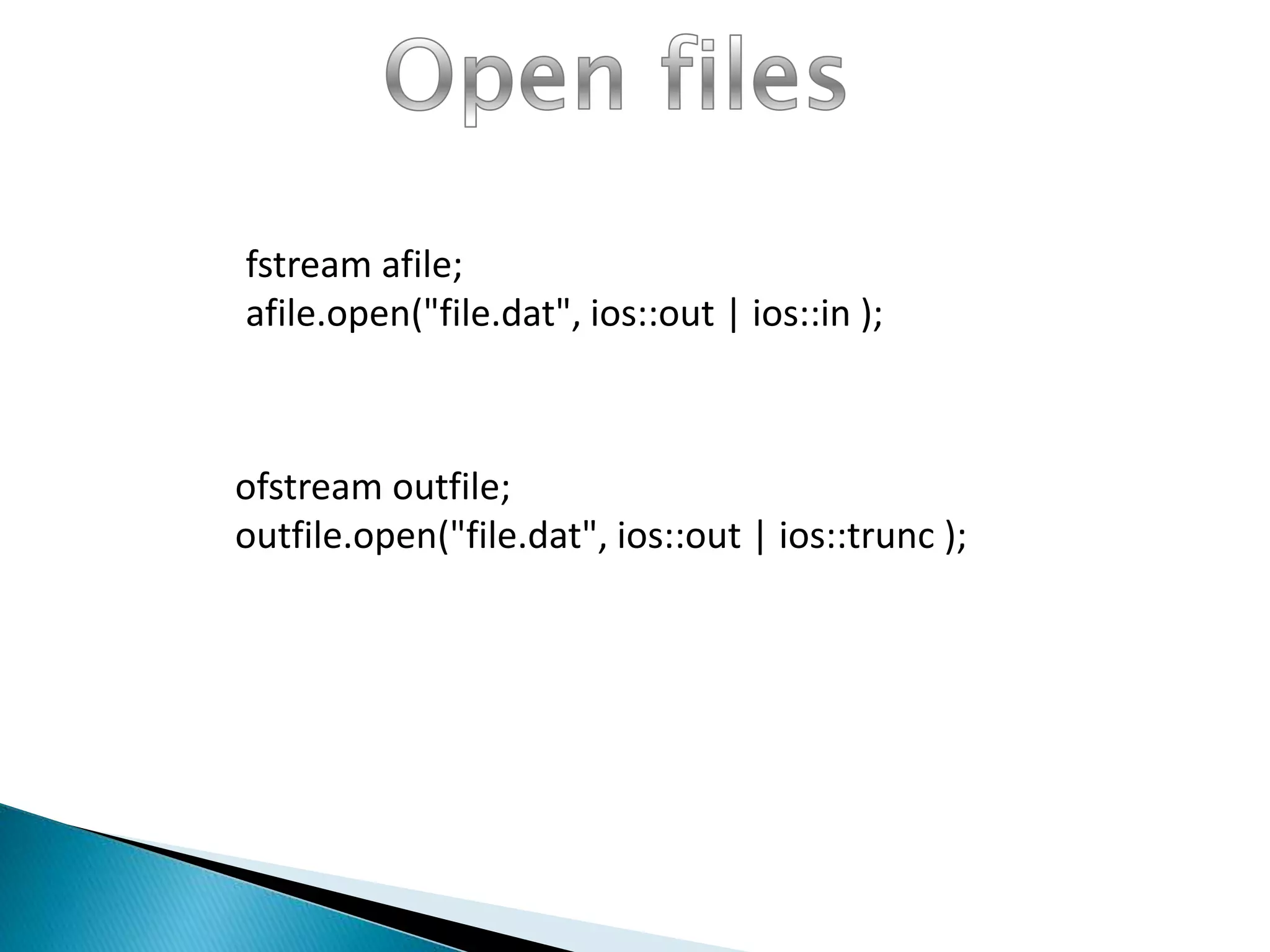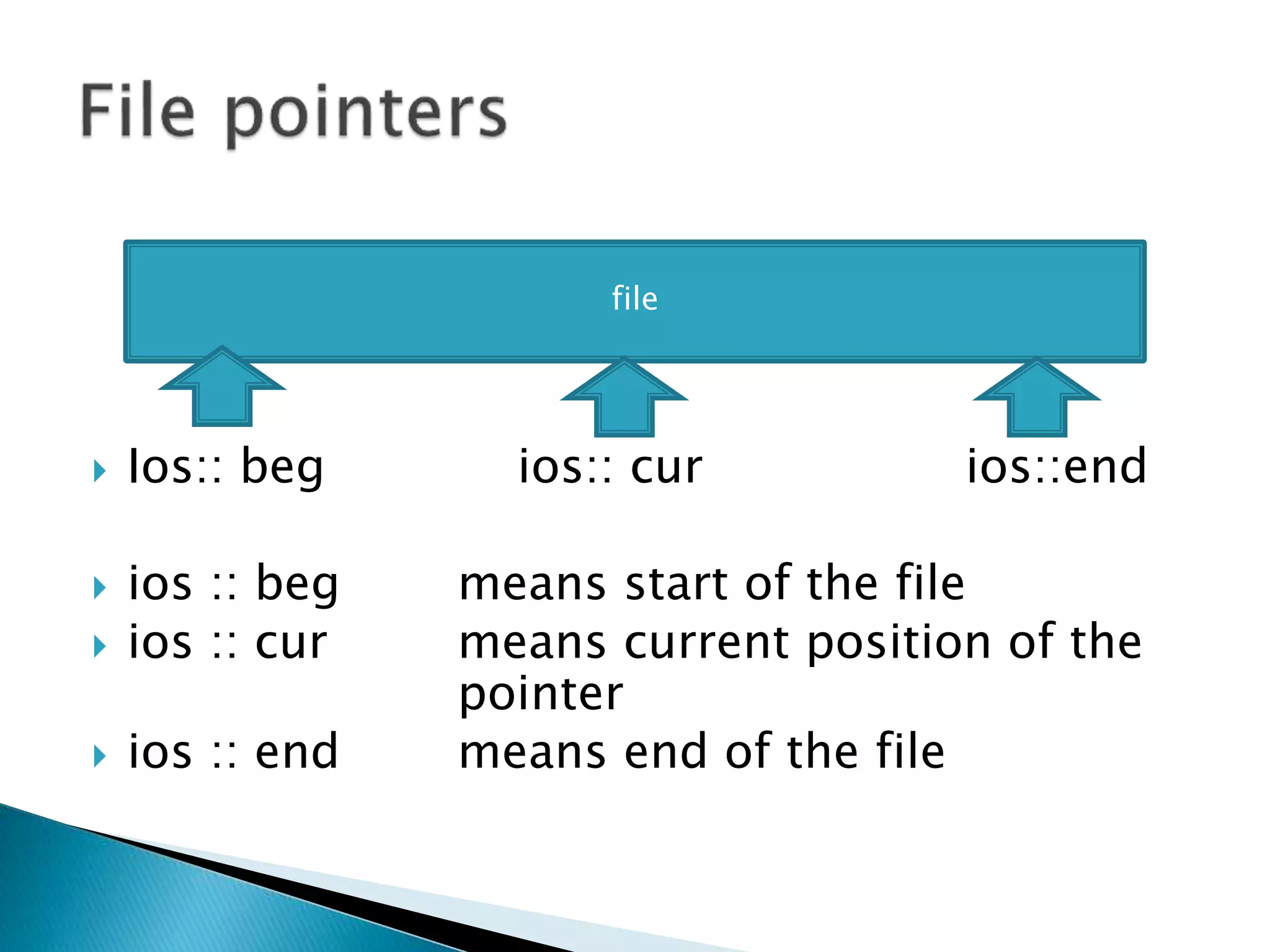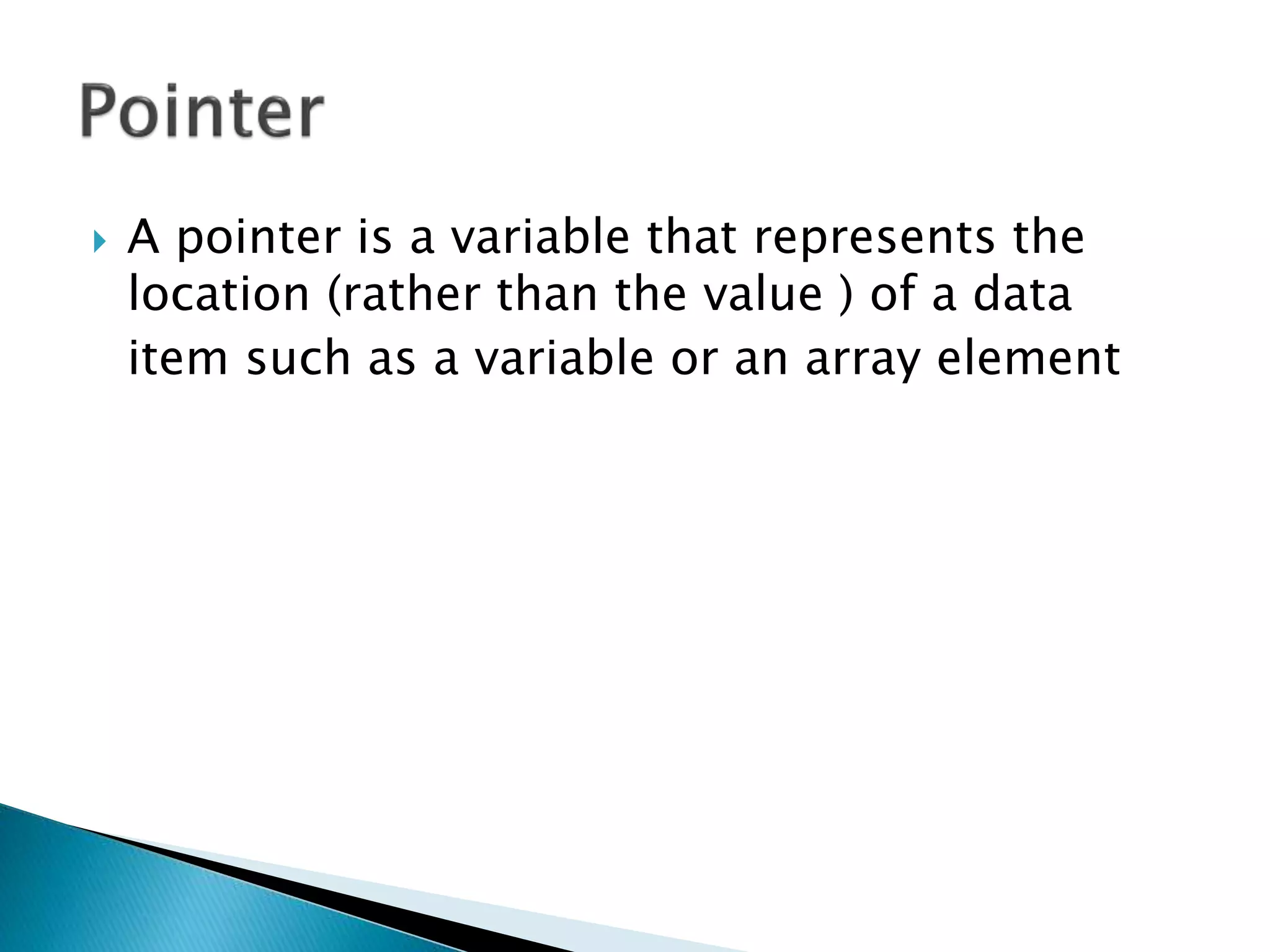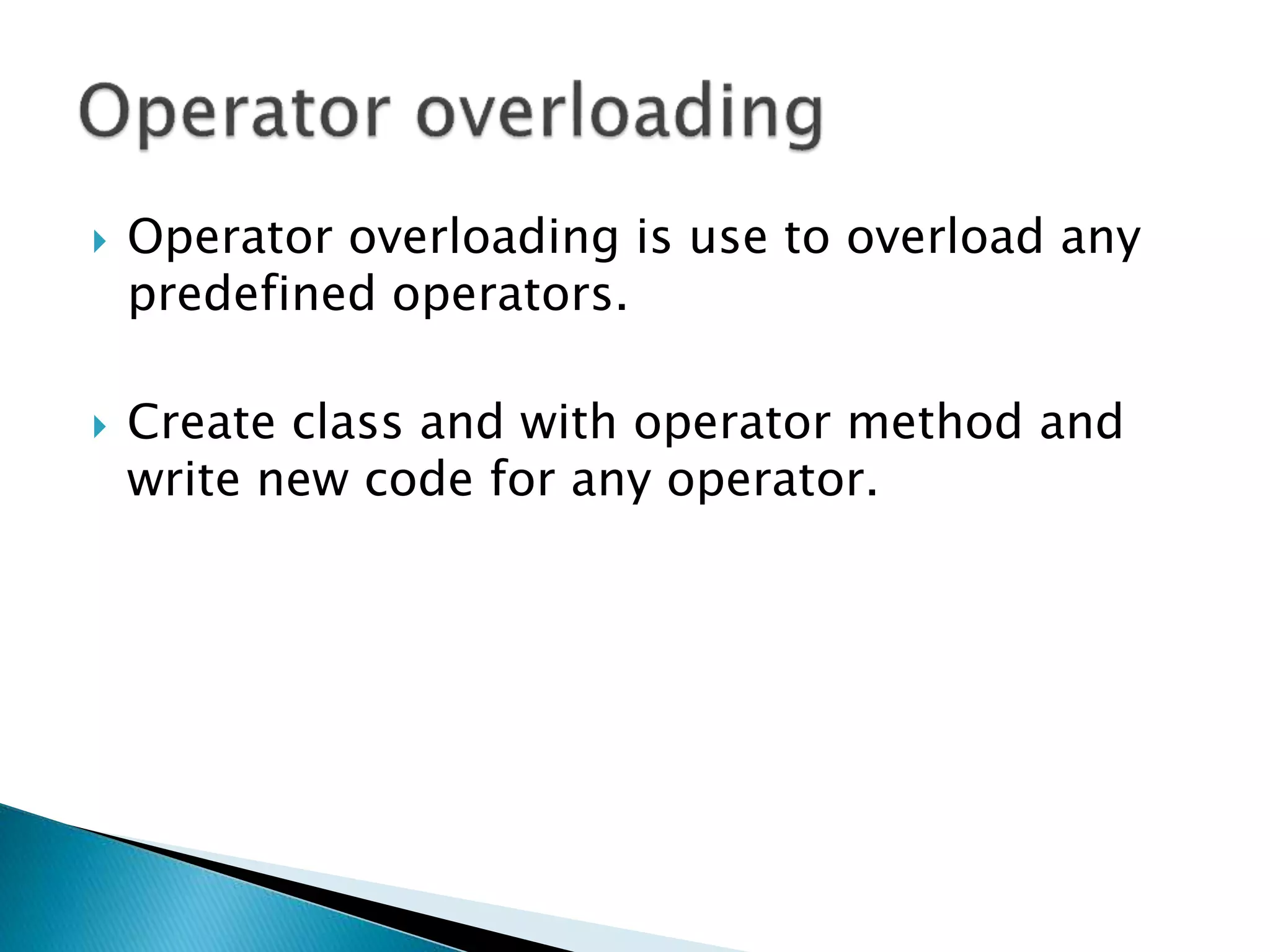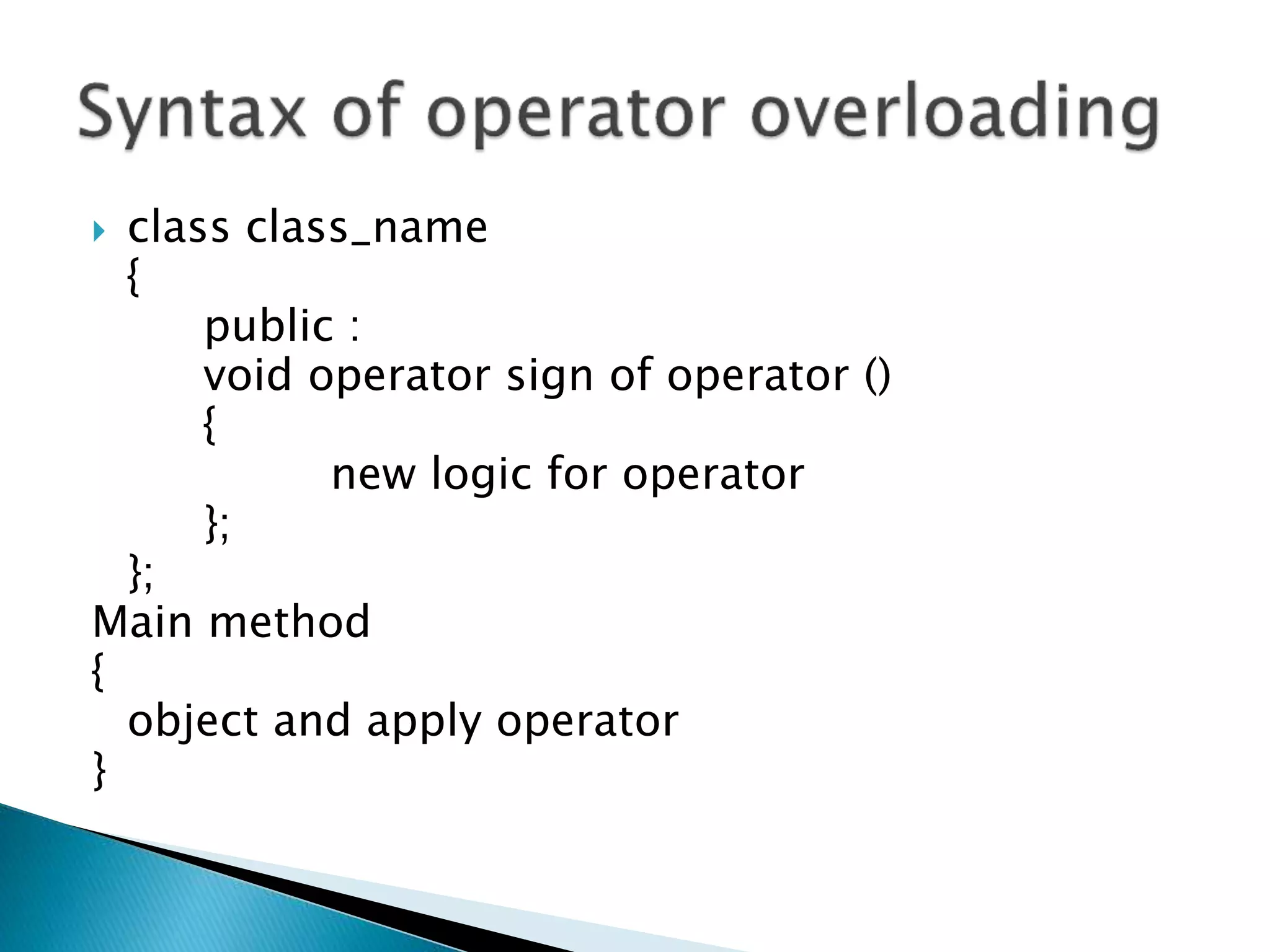C++ is an object-oriented programming language that is an extension of C. It was developed in the early 1980s by Bjarne Stroustrup at Bell Labs. C++ supports concepts like inheritance, polymorphism, and encapsulation that make it suitable for large, complex programs. Inheritance allows classes to inherit properties from parent classes. Polymorphism is the ability to process objects of different types in the same way. Encapsulation combines data and functions that operate on that data within a single unit, hiding implementation details. File input/output in C++ can be handled through streams like ifstream for input and ofstream for output.







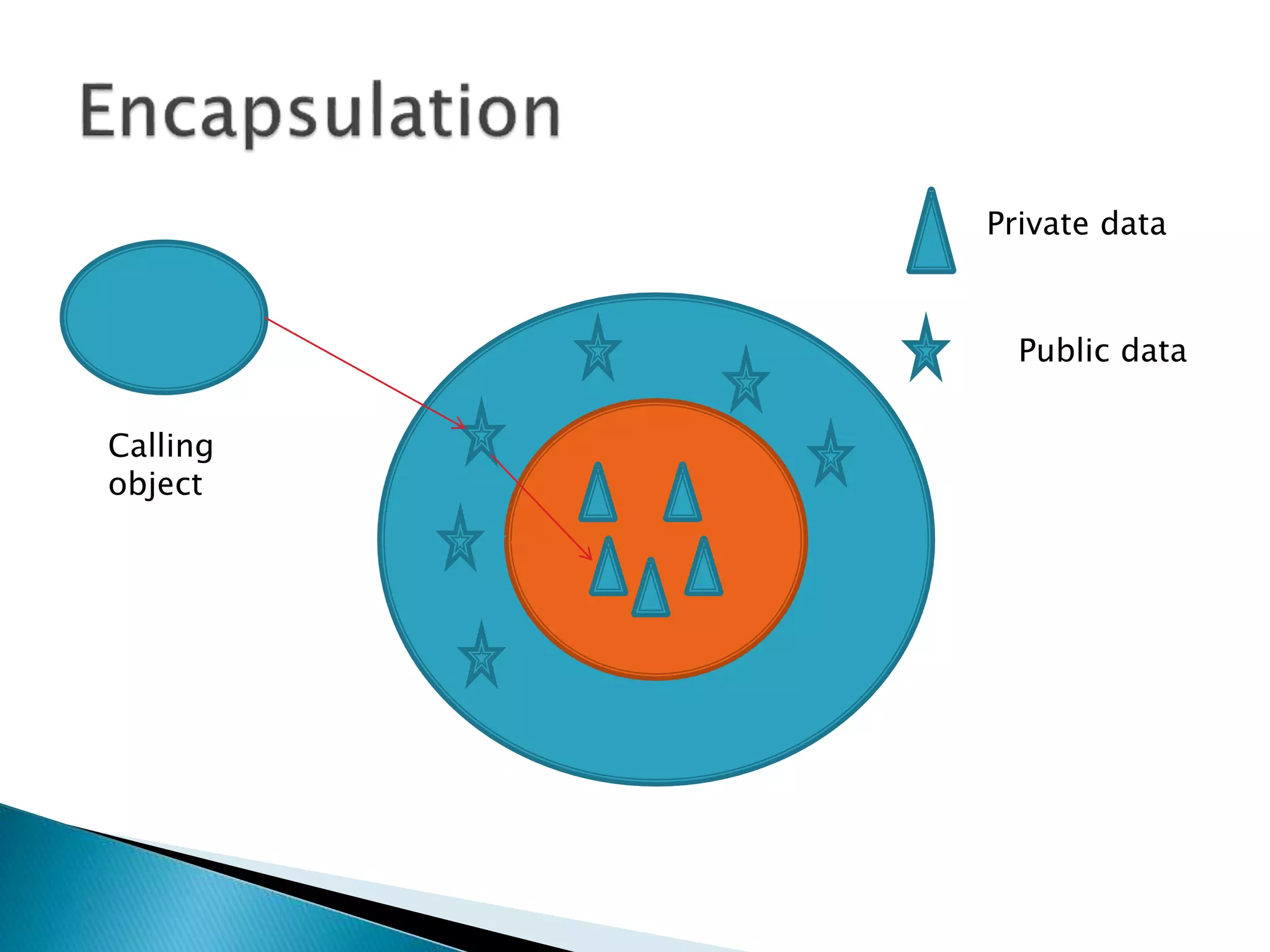


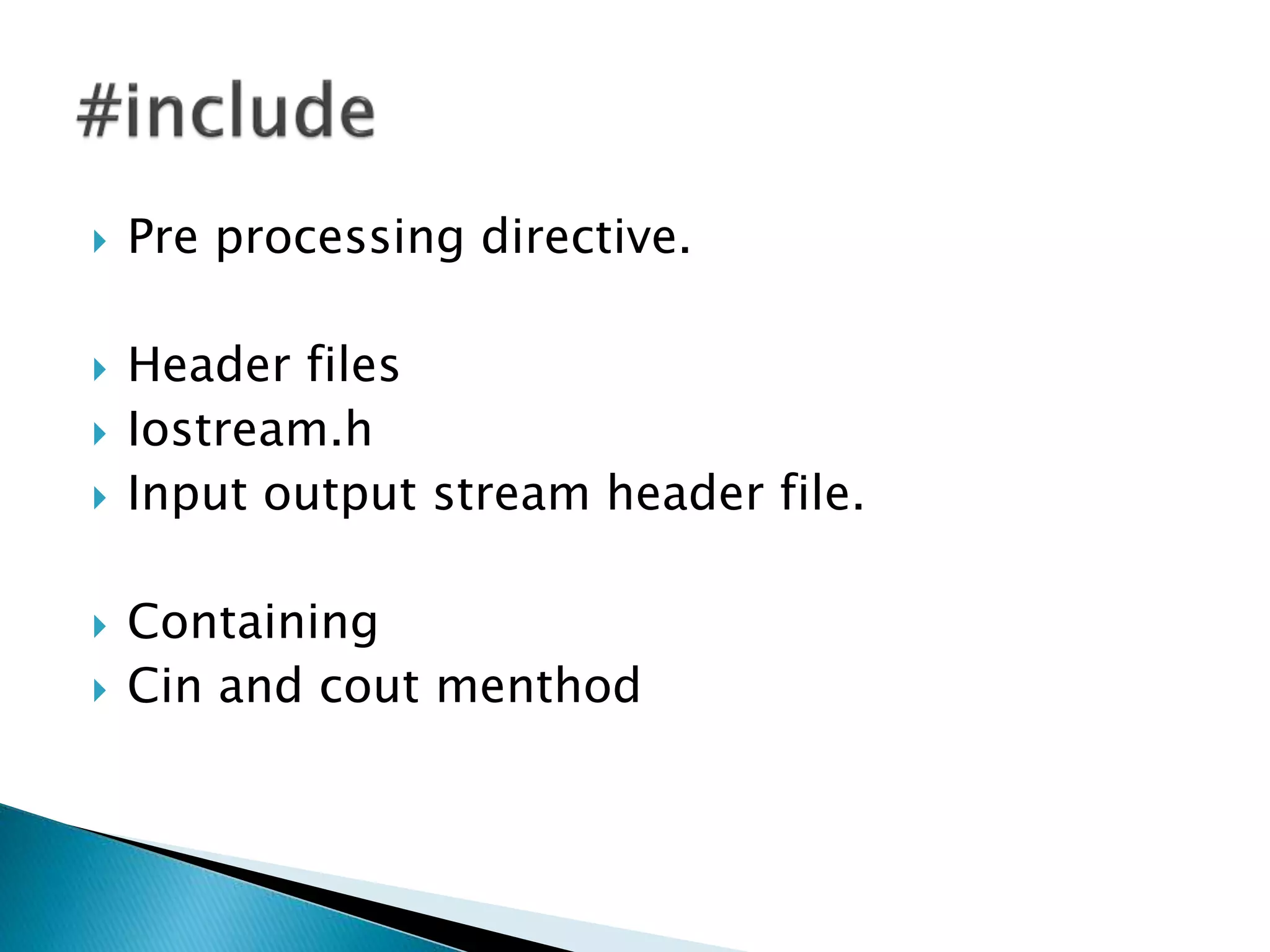
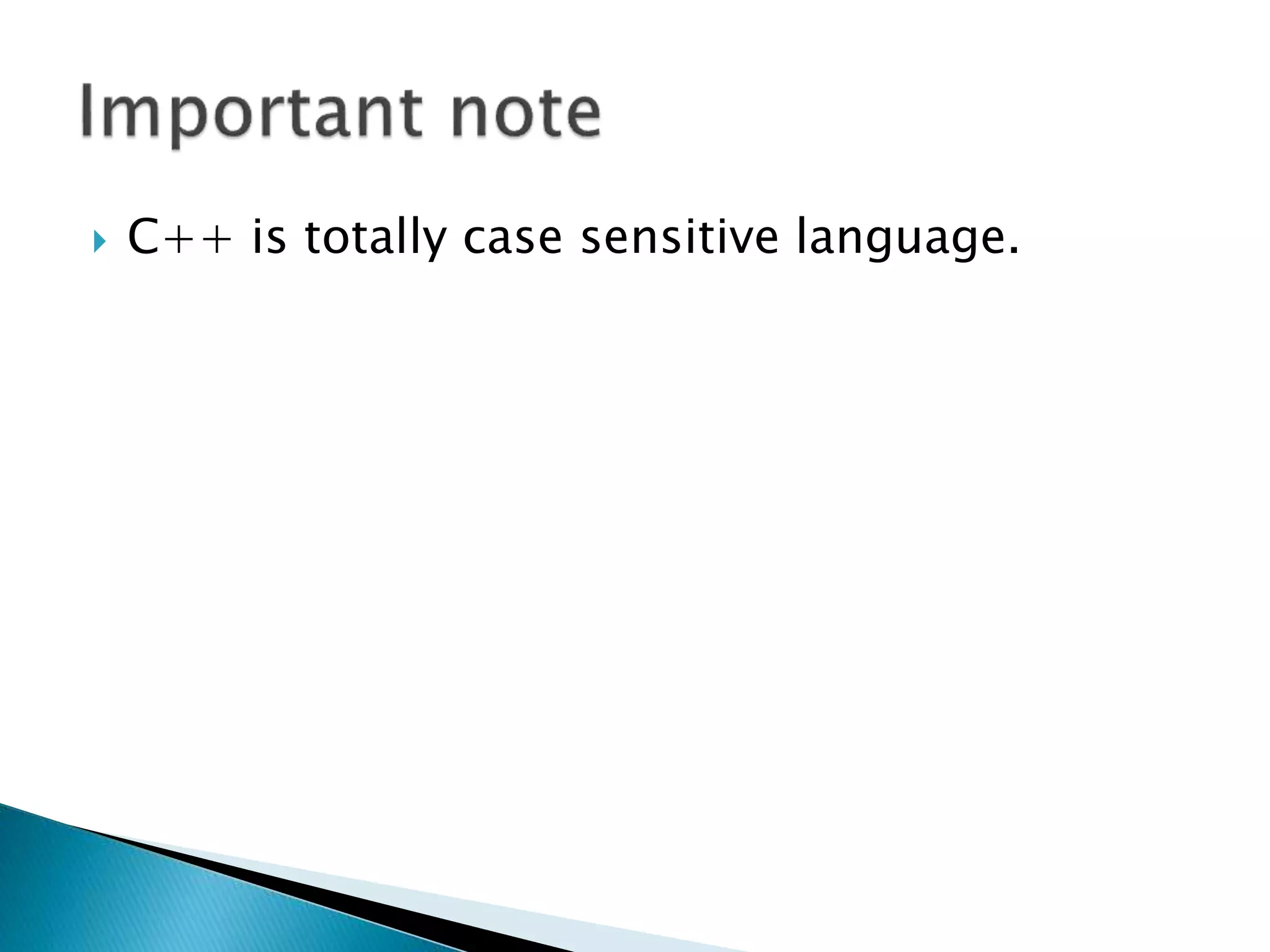
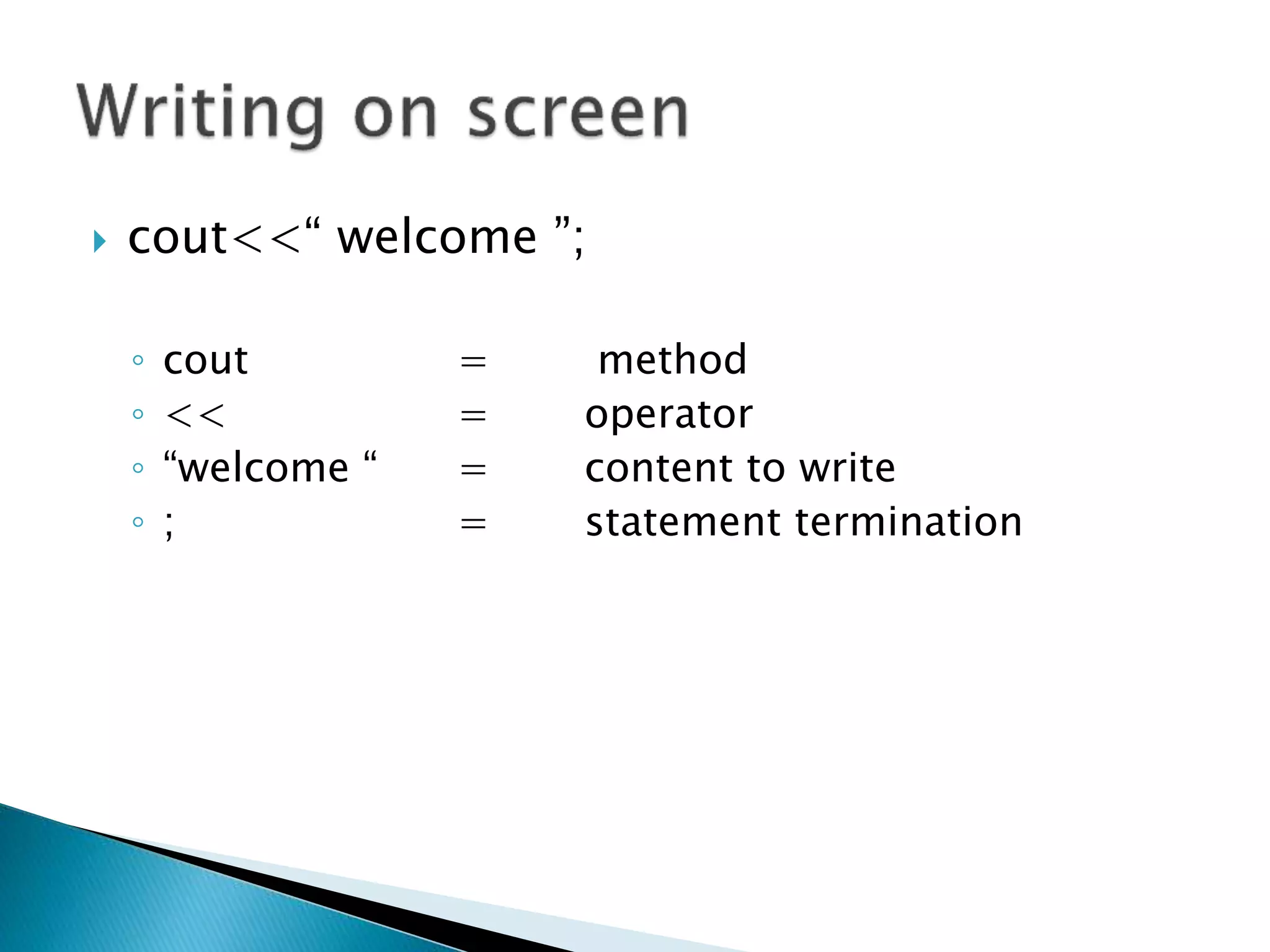
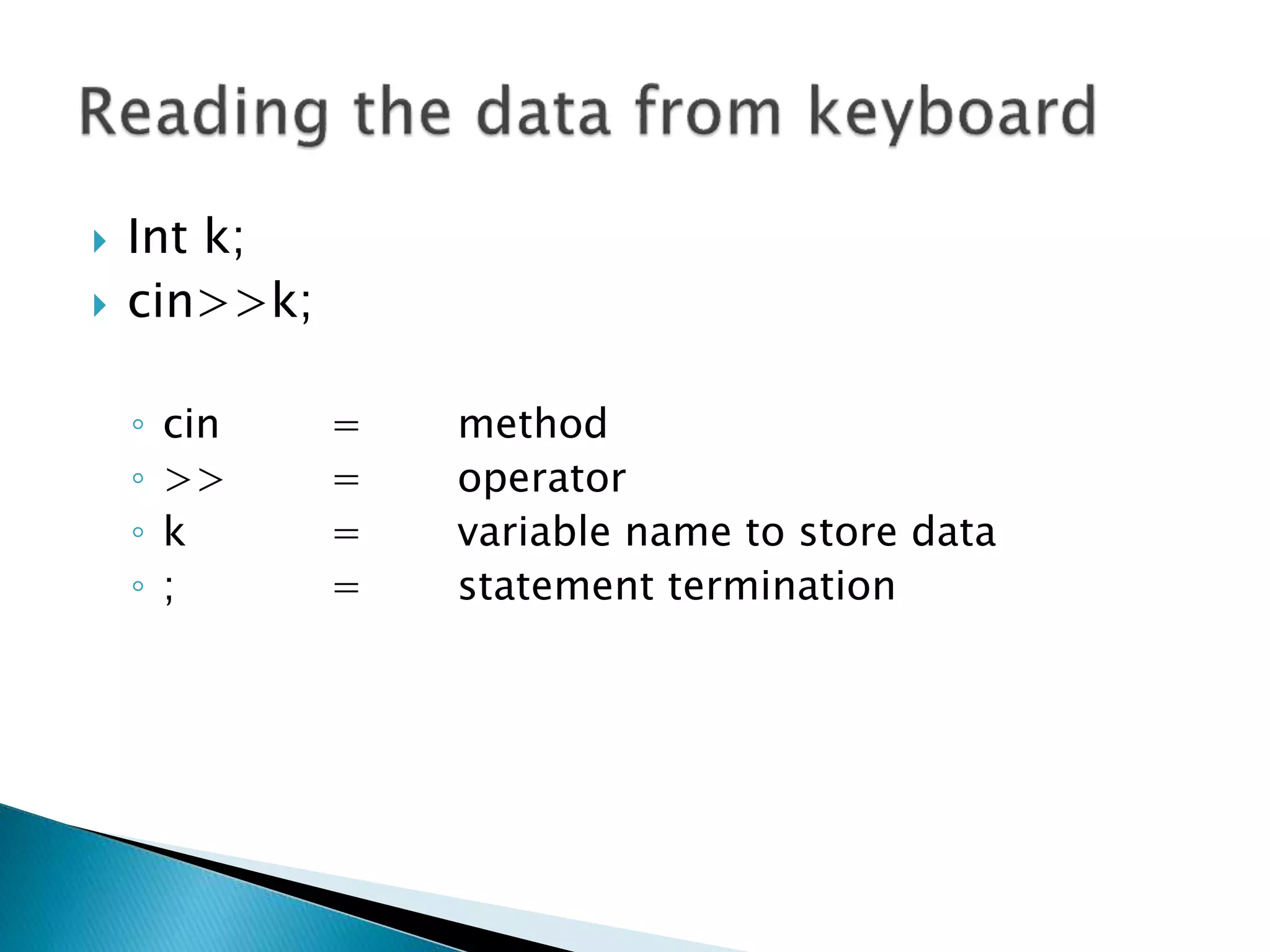

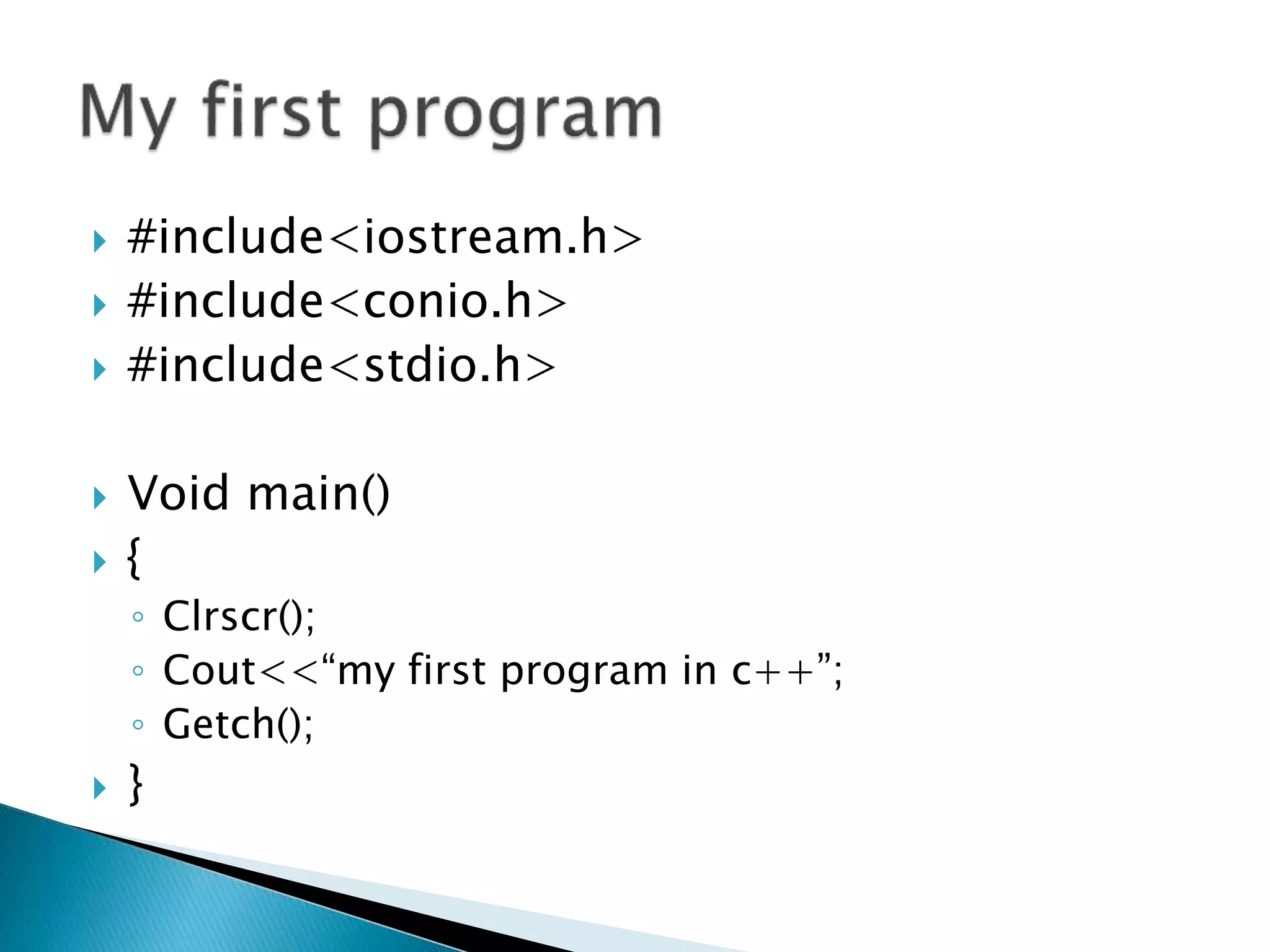


![ Brackets [ ] opening and closing brackets indicate
single and multidimensional array
subscript.
Parentheses ( ) opening and closing brackets indicate
functions calls, function parameters for
grouping expressions etc.
Braces { } opening and closing braces indicate the
start and end of a compound statement.
Comma , it is used as a separator in a function
argument list.
Semicolon ; it is used as a statement terminator.
Colon : it indicates a labelled statement or
conditional operator symbol.
Asterisk * it is used in pointer declaration or as
multiplication operator.
Equal sign = it is used as an assignment operator.
Pound sign # it is used as pre-processor directive.](https://image.slidesharecdn.com/ctheory-161226121155/75/C-theory-19-2048.jpg)

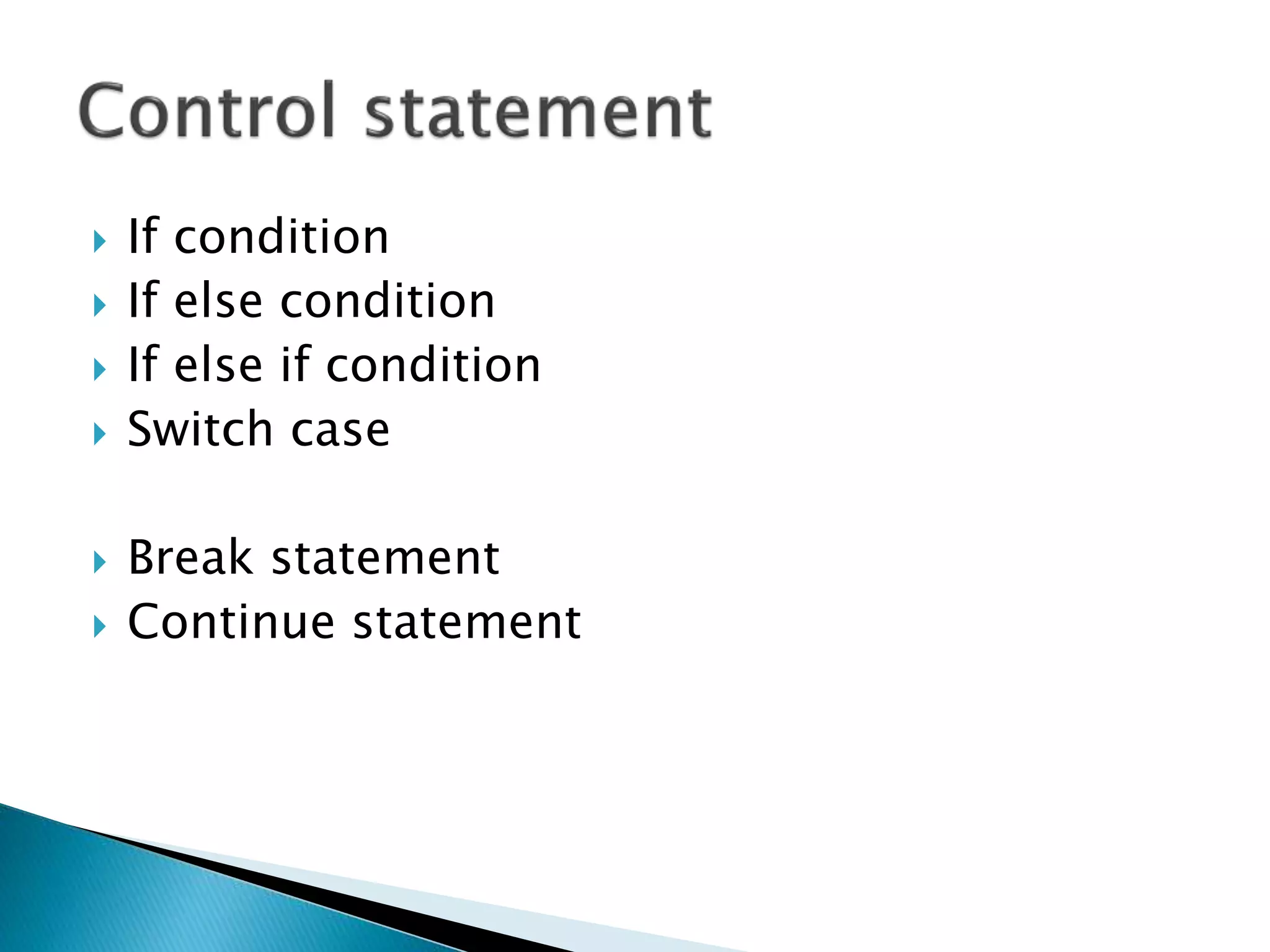
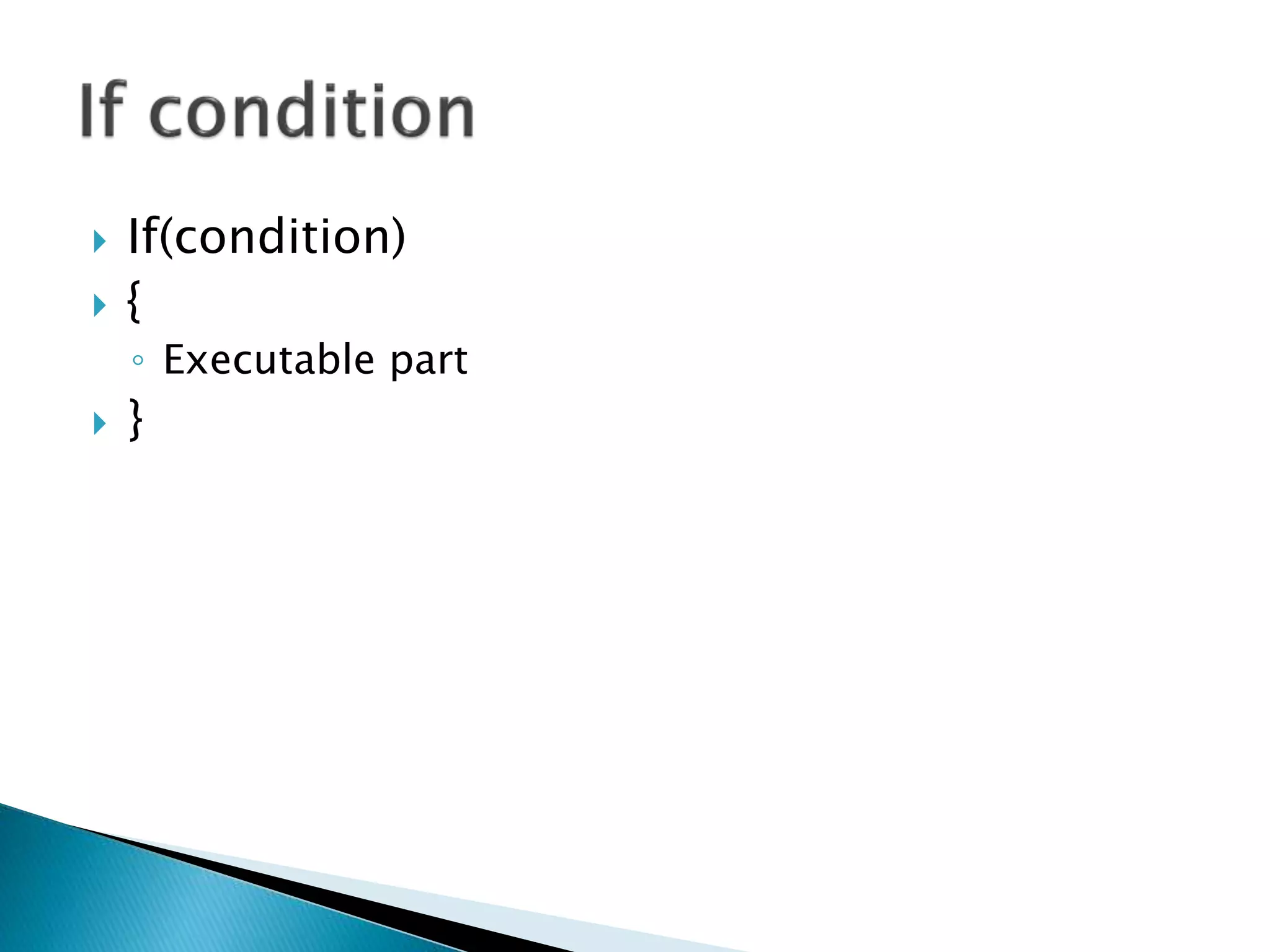

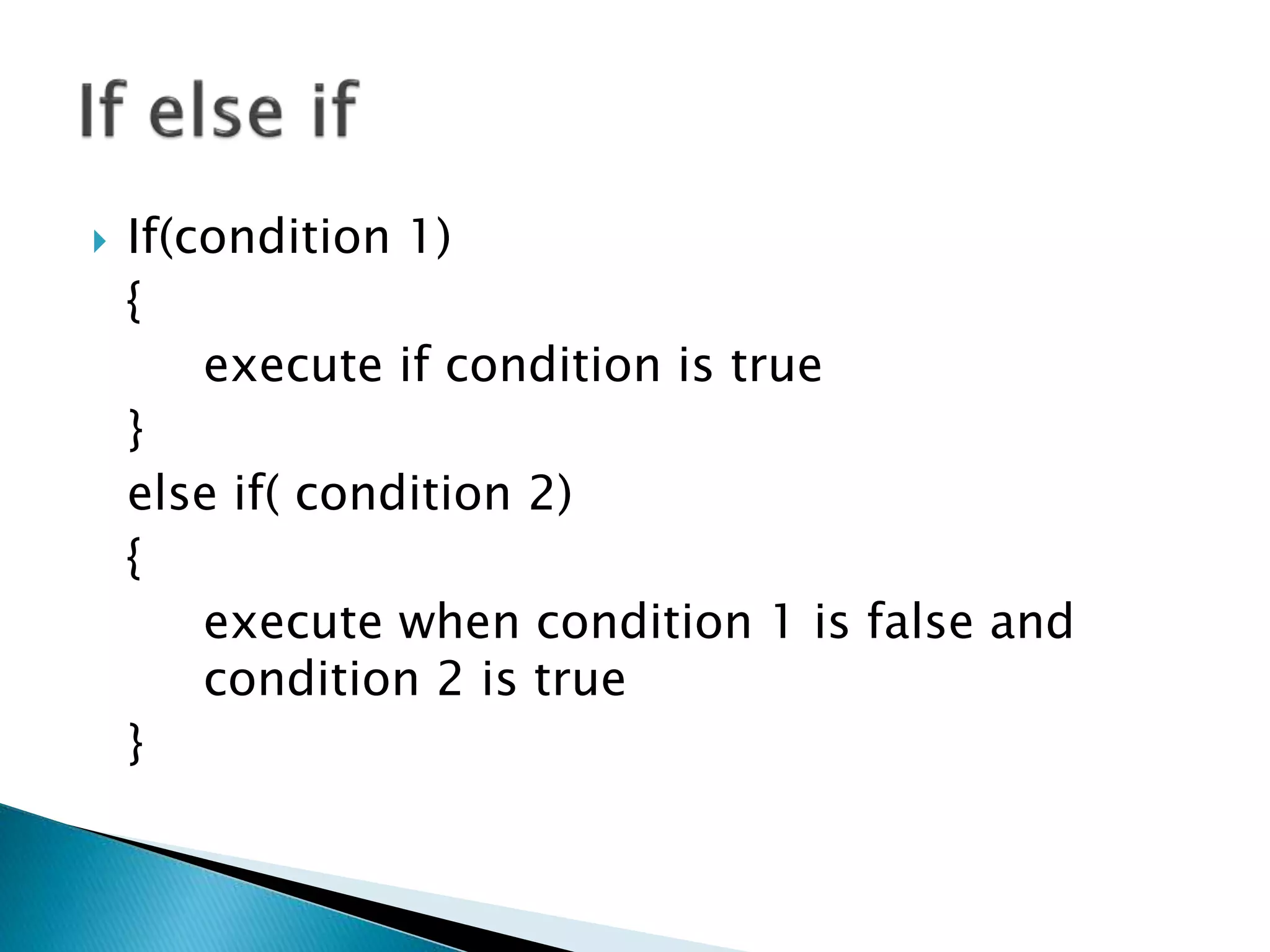









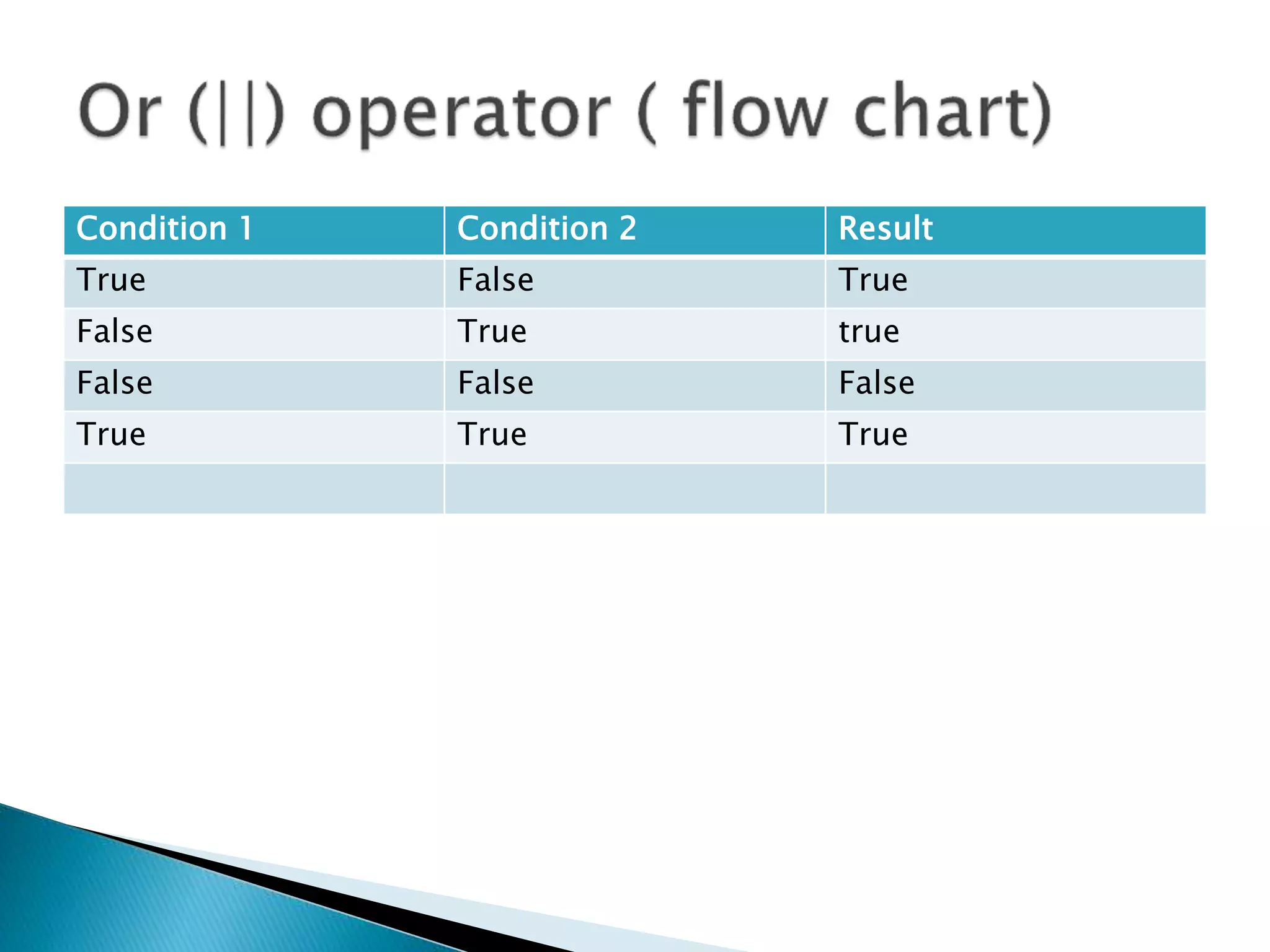


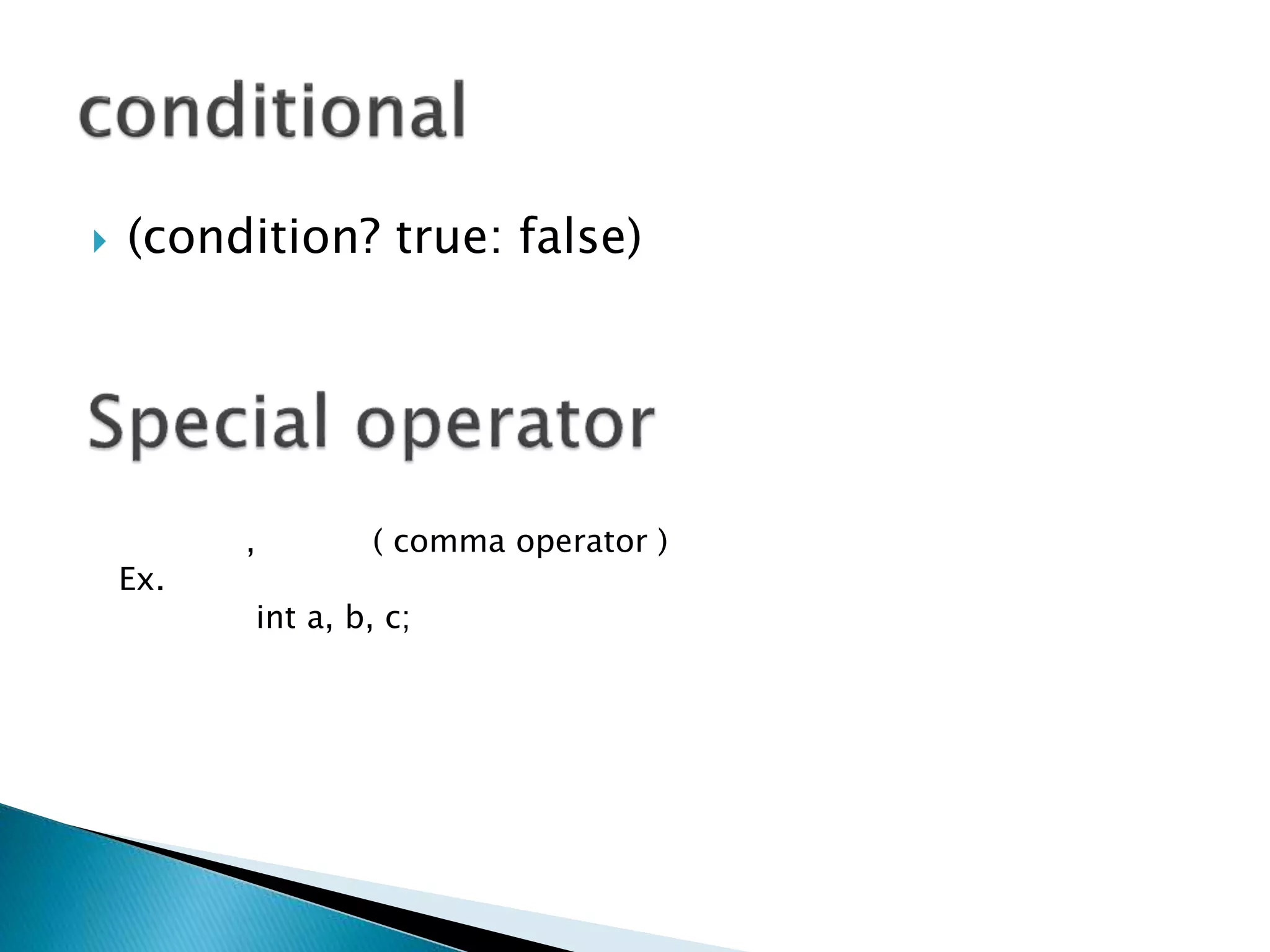










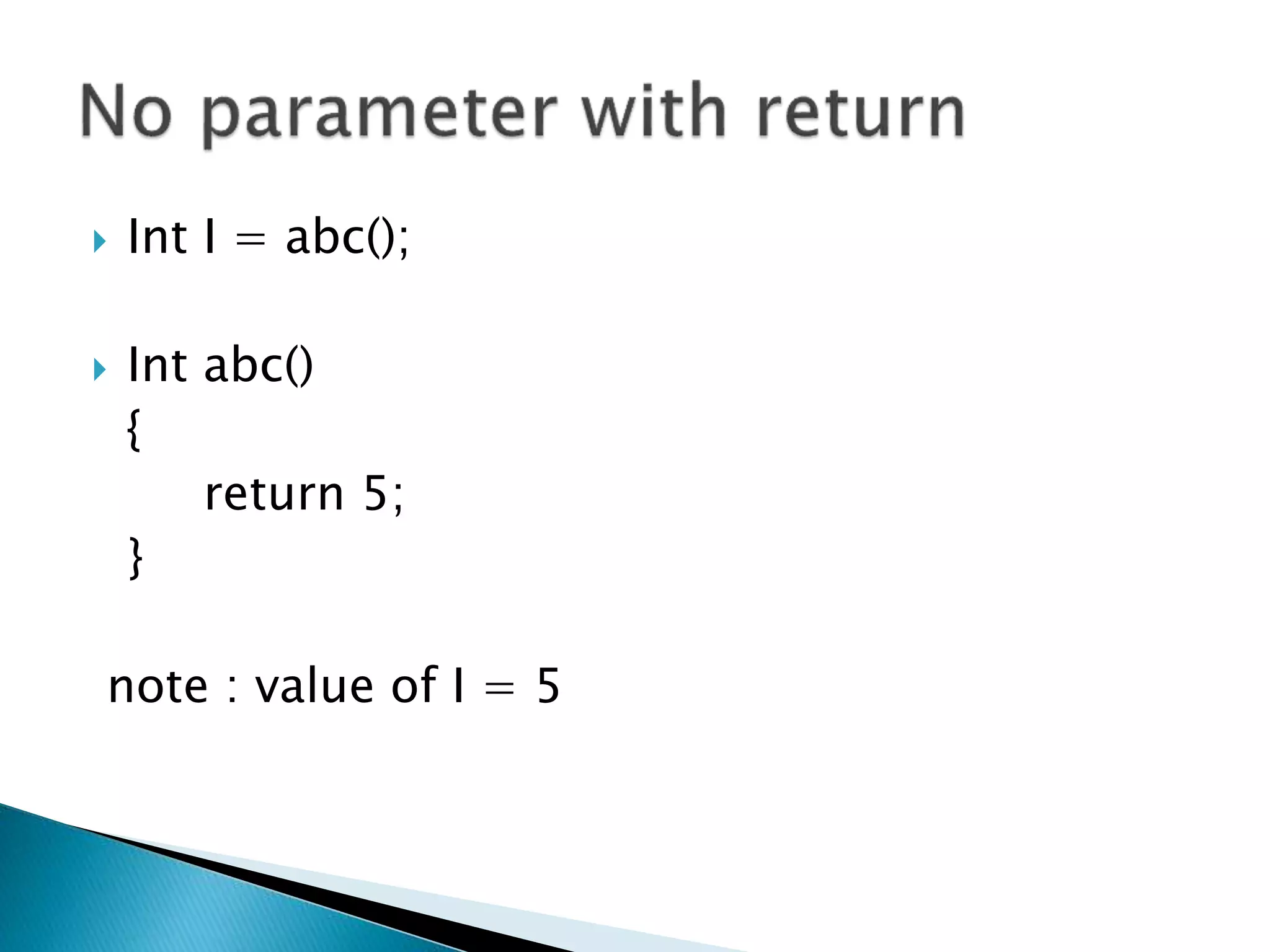
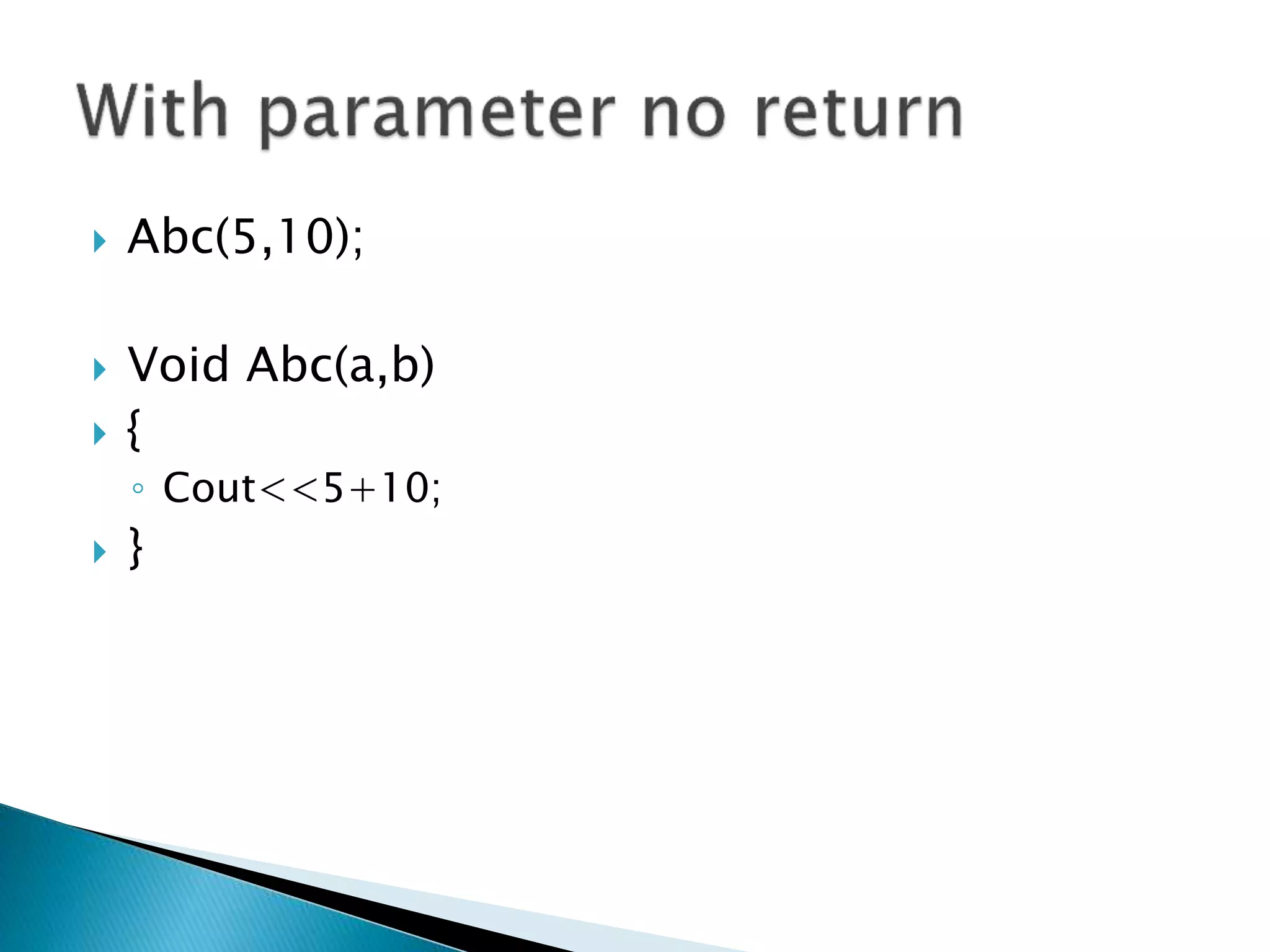

![ Single dimention
Multi dimention
◦ Collection of same data type.
◦ Int a[0];](https://image.slidesharecdn.com/ctheory-161226121155/75/C-theory-51-2048.jpg)
![ Index of array start with 0 (zero)
Index
10A[0]
A[1]
A[2]
A[3]
20
30
40
Int A[4]
value](https://image.slidesharecdn.com/ctheory-161226121155/75/C-theory-52-2048.jpg)
![ Ex. Int a[4][3]
◦ 4 rows
◦ 3 columns
◦
a[1] 40 50 60
a[2] 70 80 90
a[3] 100 110 120
a[0] 10 20 30
index a[0] a[1] a[2]
a[1][1] = 50](https://image.slidesharecdn.com/ctheory-161226121155/75/C-theory-53-2048.jpg)



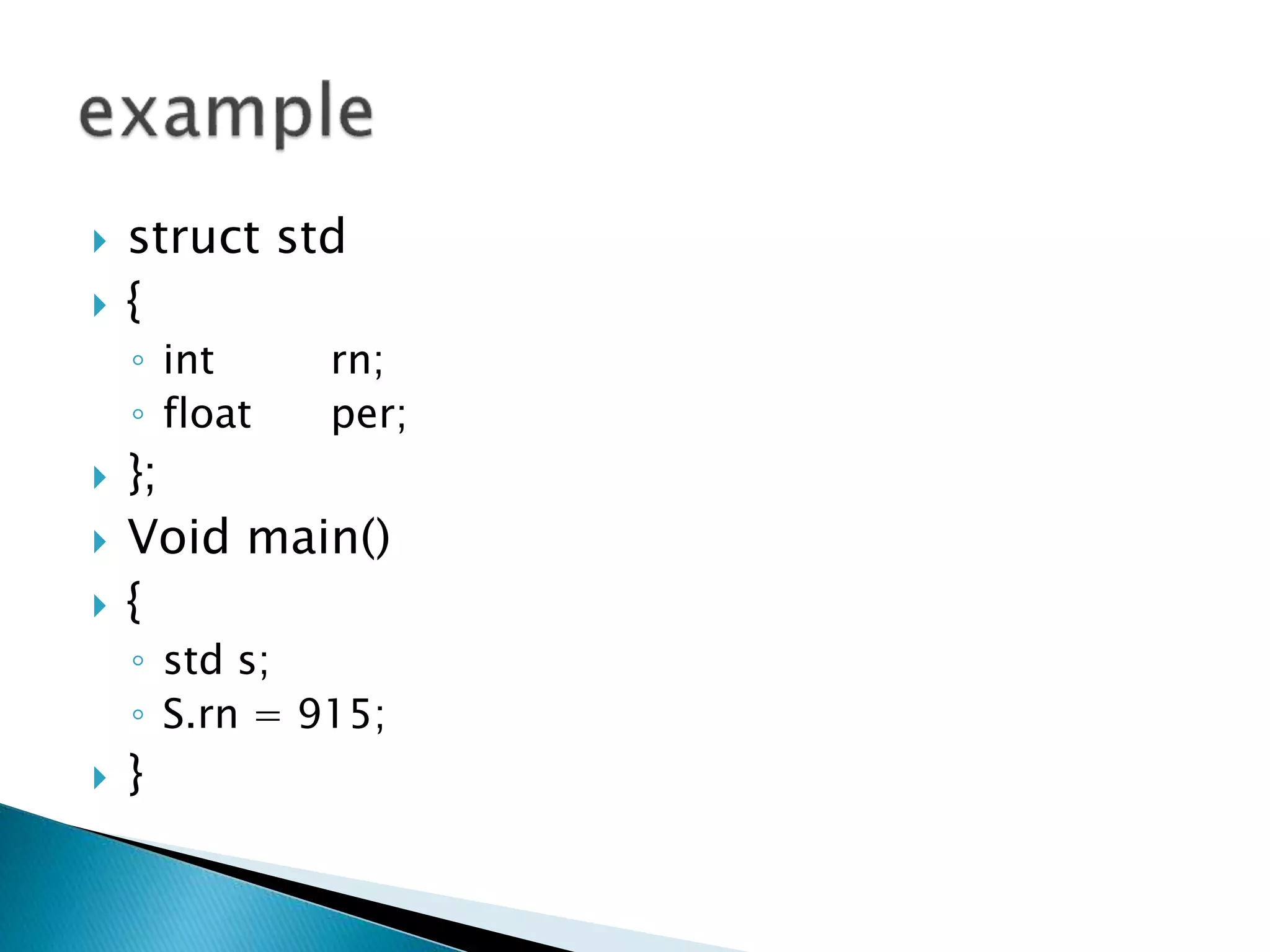


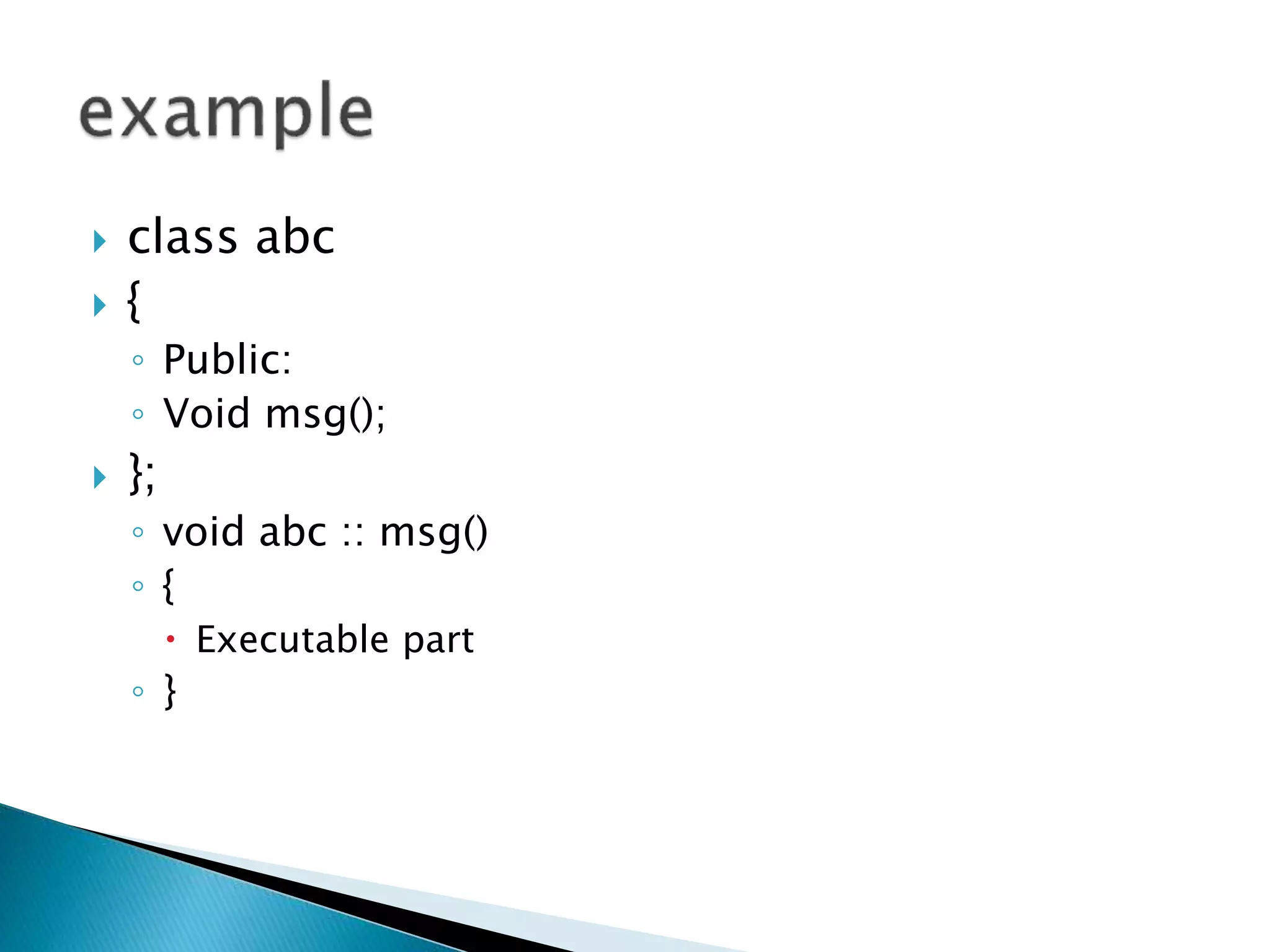
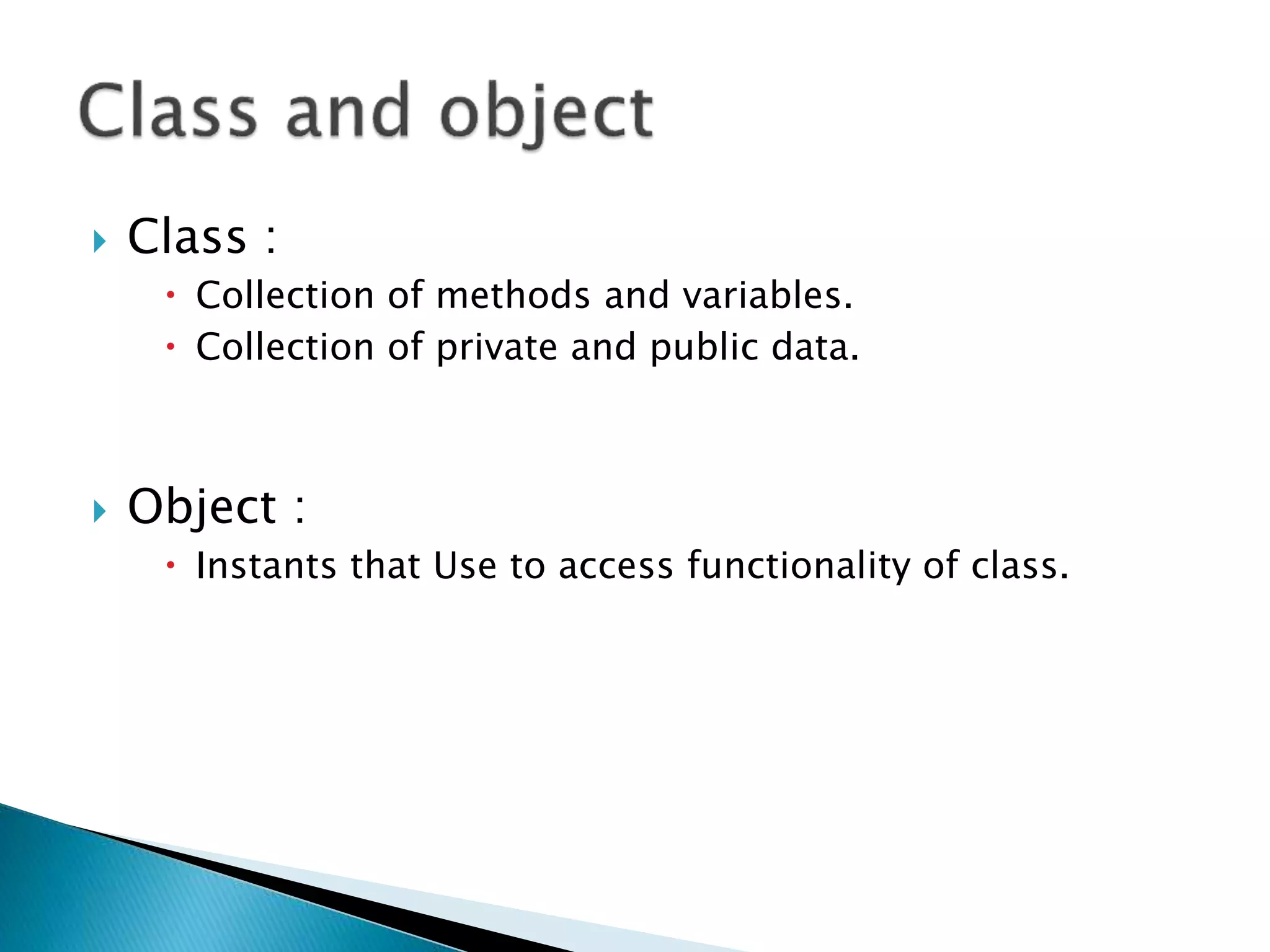

![ Return type method name ( list of parameters)
{
◦ Executable part
◦ [ return data ]
};](https://image.slidesharecdn.com/ctheory-161226121155/75/C-theory-63-2048.jpg)
